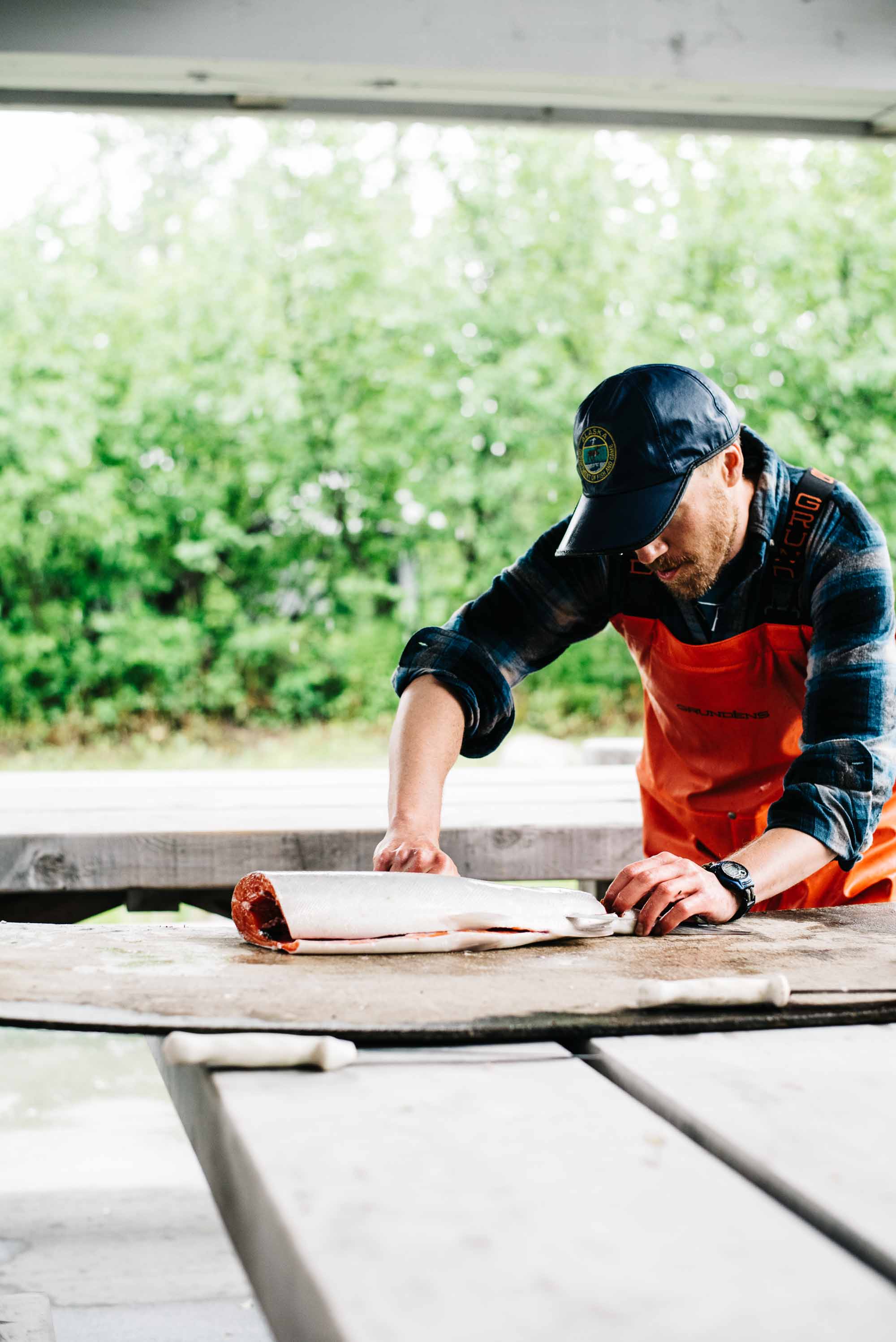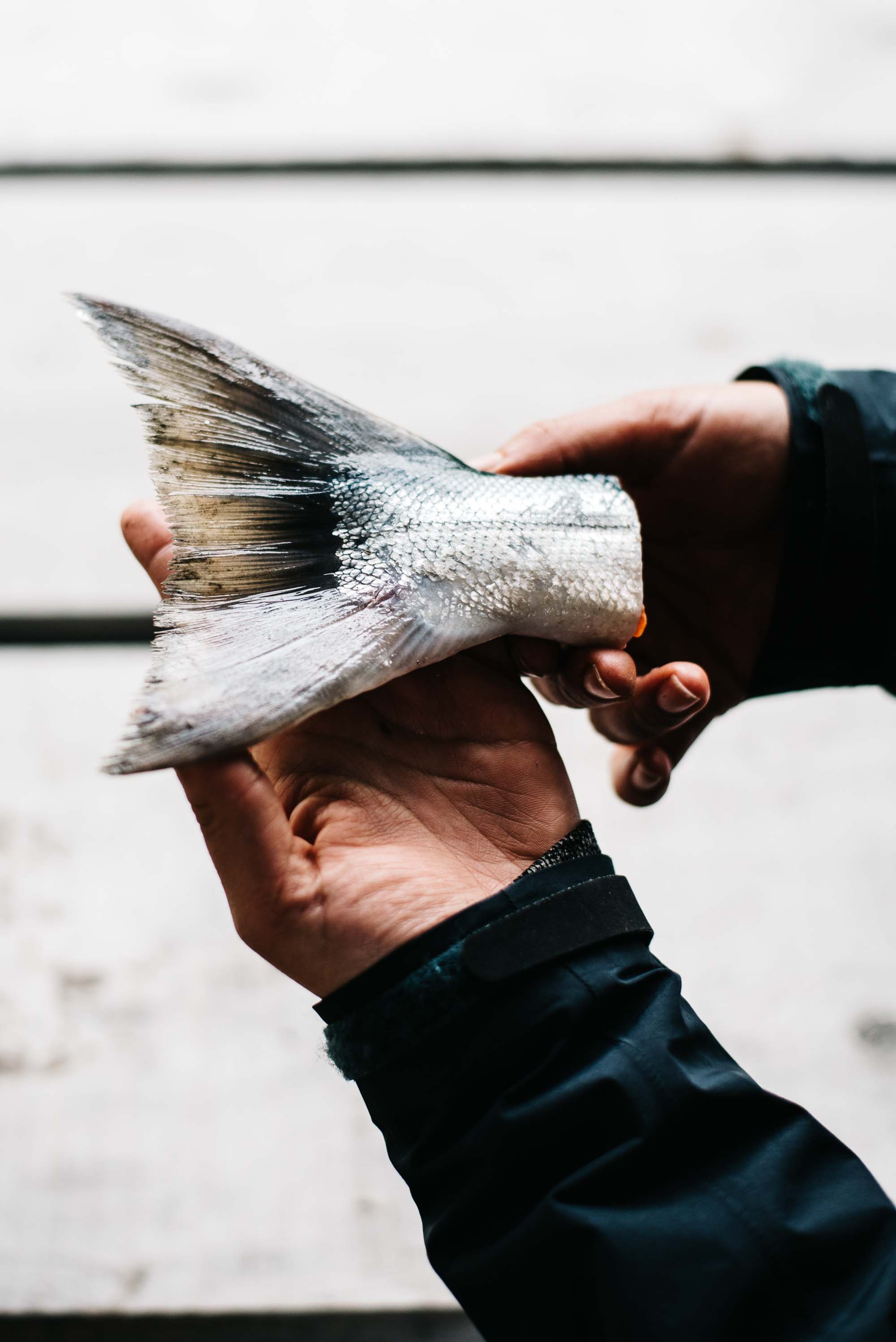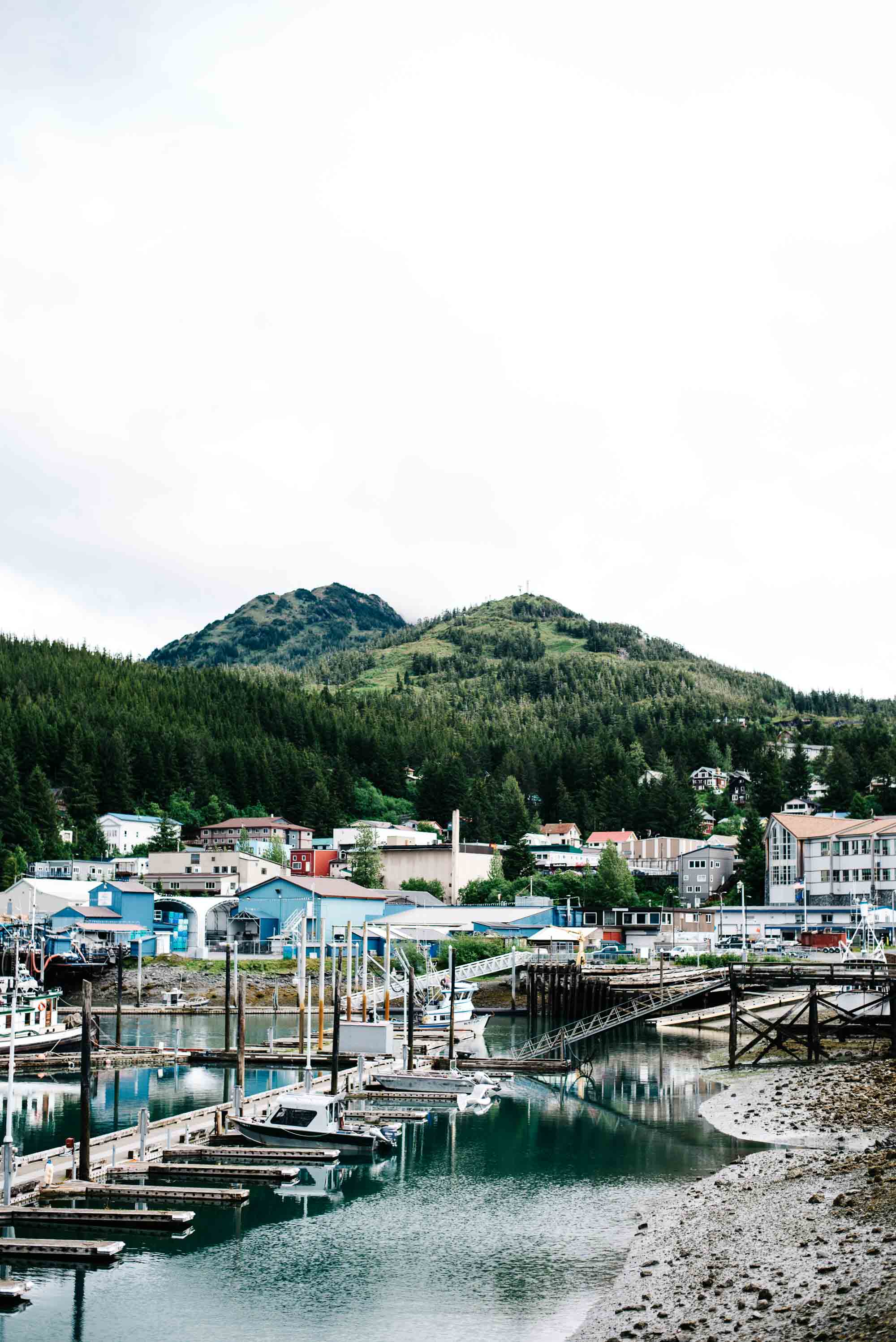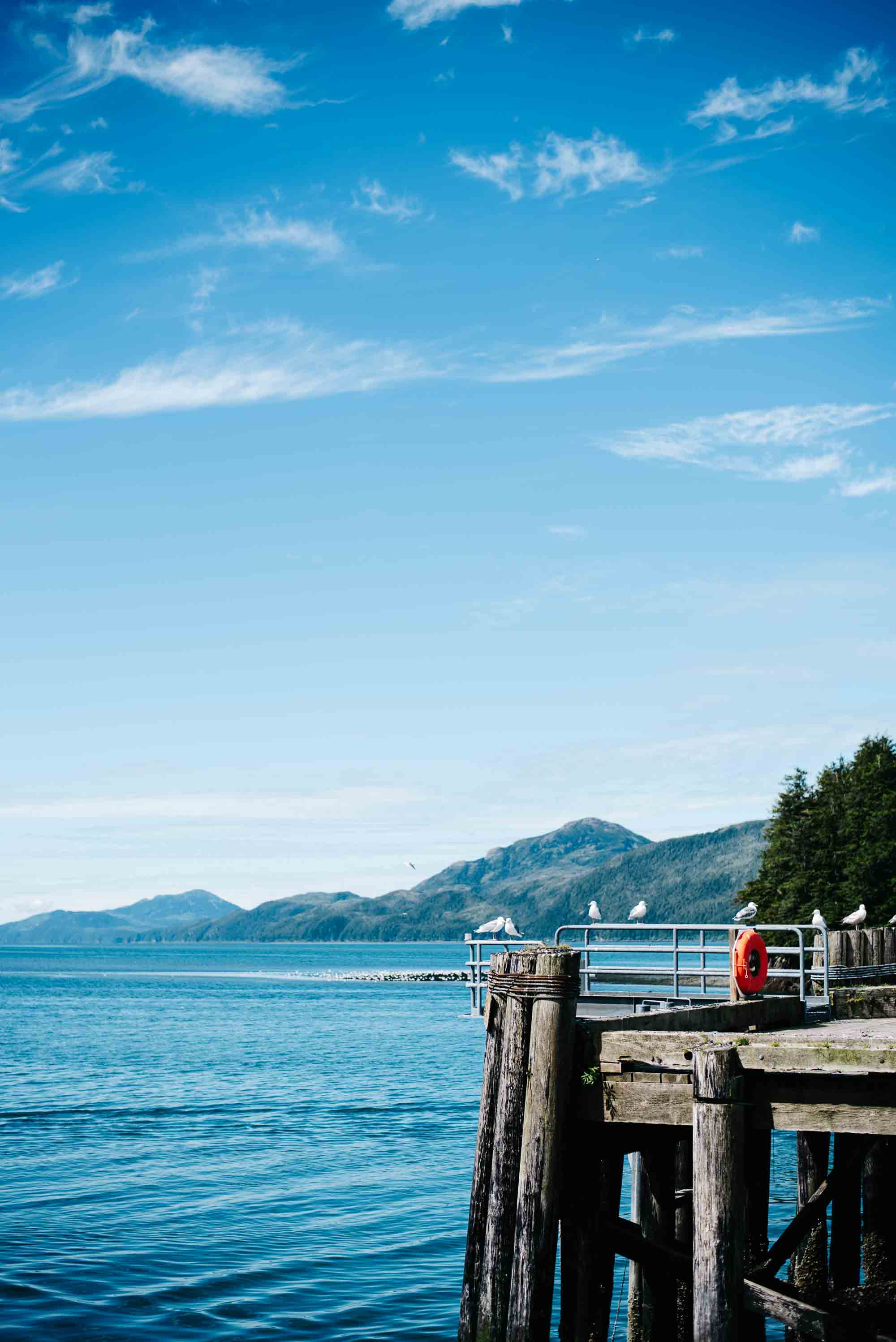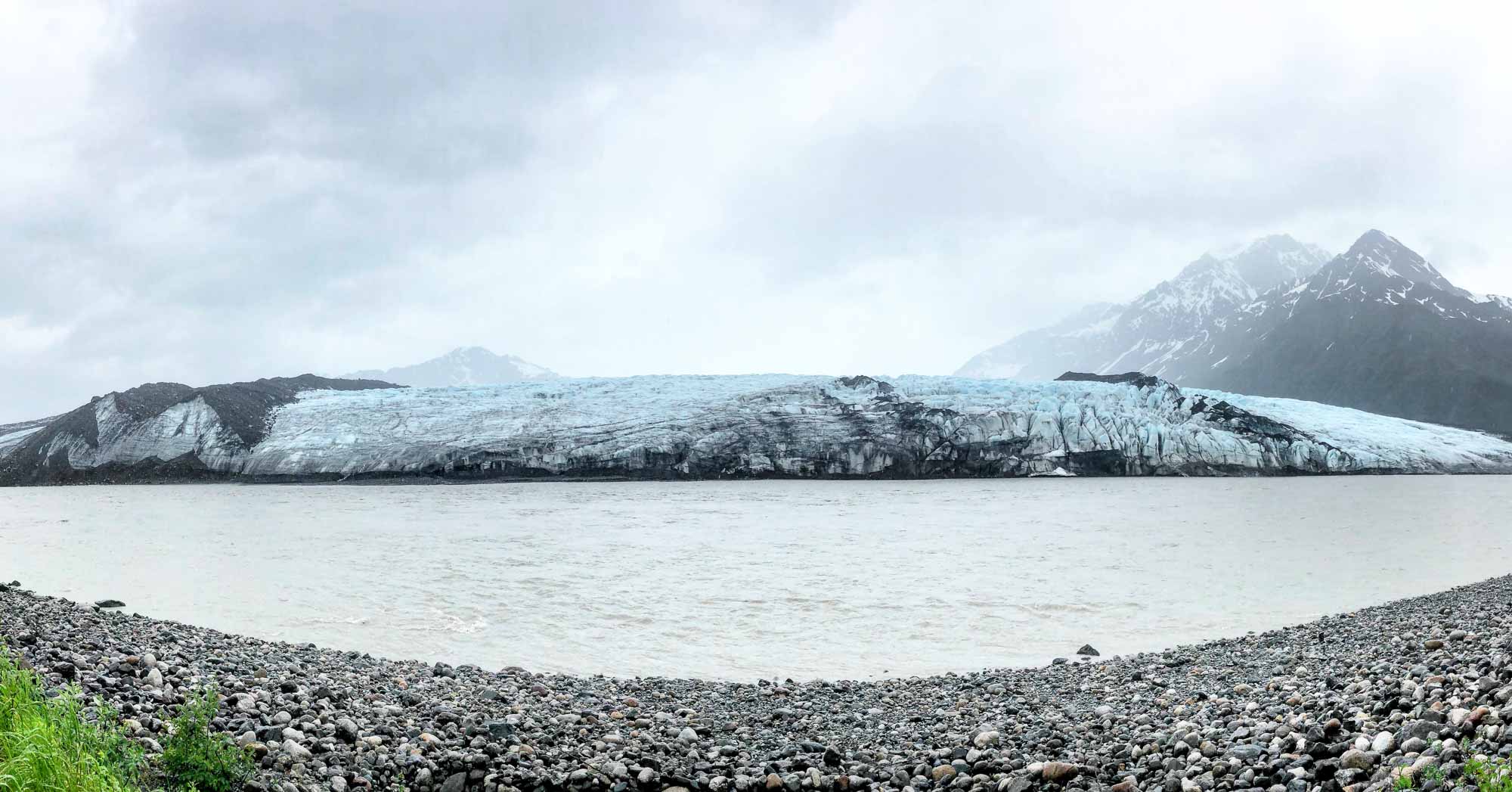
This post, and the travel it describes, was created in partnership with the extraordinary Copper River Salmon community.
Alaska is an altered state. It is sky and wind and rain and ice and land, more land than you’ve ever imagined, mountains and plains and deltas that are untouched and vast and vital. There are bears here, brownies (grizzlies) and blackies (black bears). There are bald eagles and moose and waterfalls and bars called The Reluctant Fisherman. Alaska is wild and lush, dew everywhere, ocean lashing against the hulls of boats, humans hunting one moose a season to survive, wild salmon swimming upstream with geomagnetic homing sensors to spawn, to die, to give themselves back to the land.
Alaska is an airboat crossing the Copper River troubled by the season’s biggest storm, a glacier, an iceberg, female fishermen who do, in fact, want to be called fishermen, foraged spruce tips, salmonberry blossoms, Alaska is women running the town. Alaska is a sockeye salmon fresh caught and cleaned in glacial water, rain at a still bright midnight, feet numb with cold, a bridge washed out and never repaired because who needs the road anyway. Alaska is strangers becoming community.
I was in Alaska for six days to learn about wild salmon and I left a better human for it.
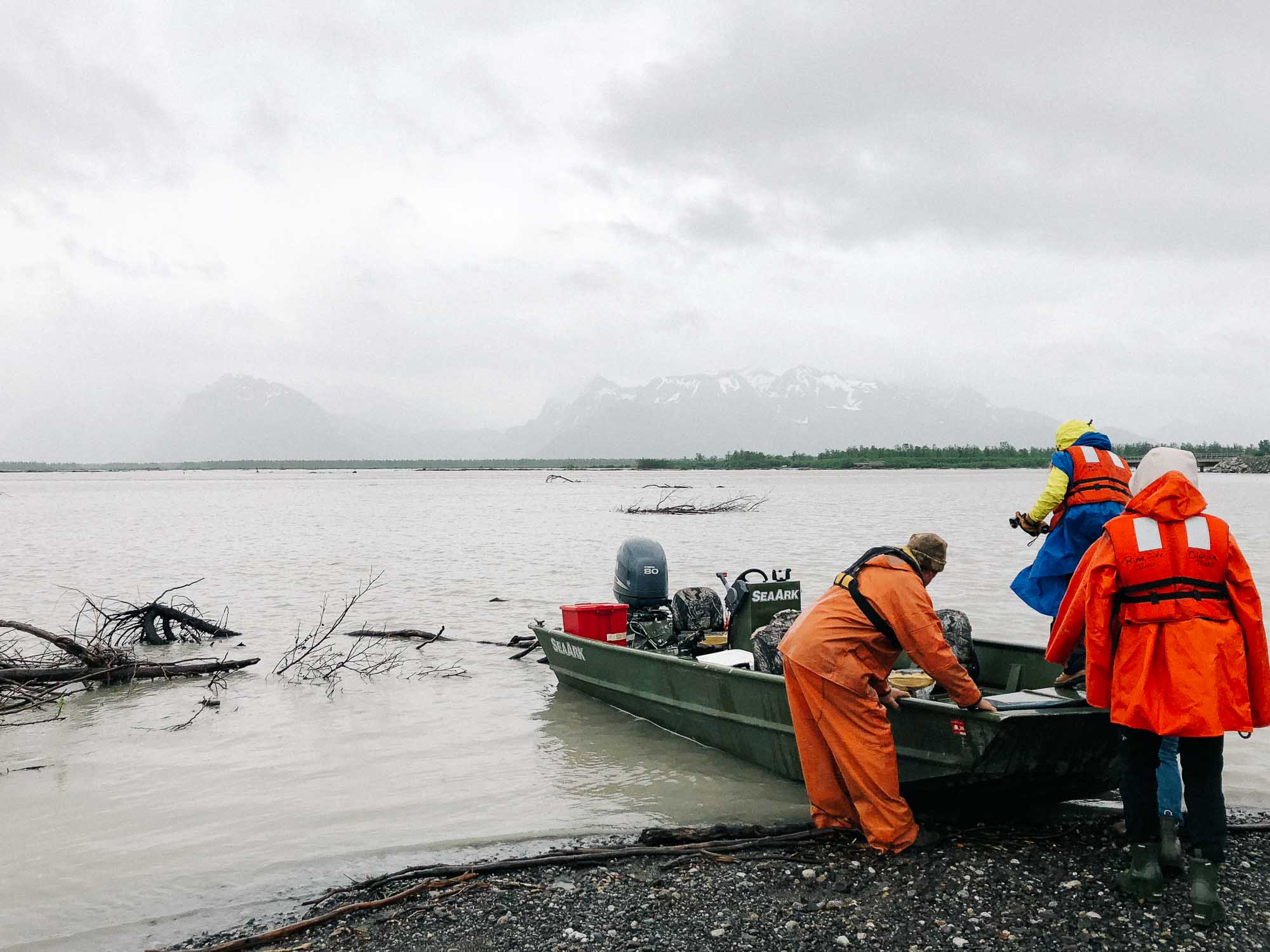
 Photo by Jessica Fiorillo
Photo by Jessica Fiorillo
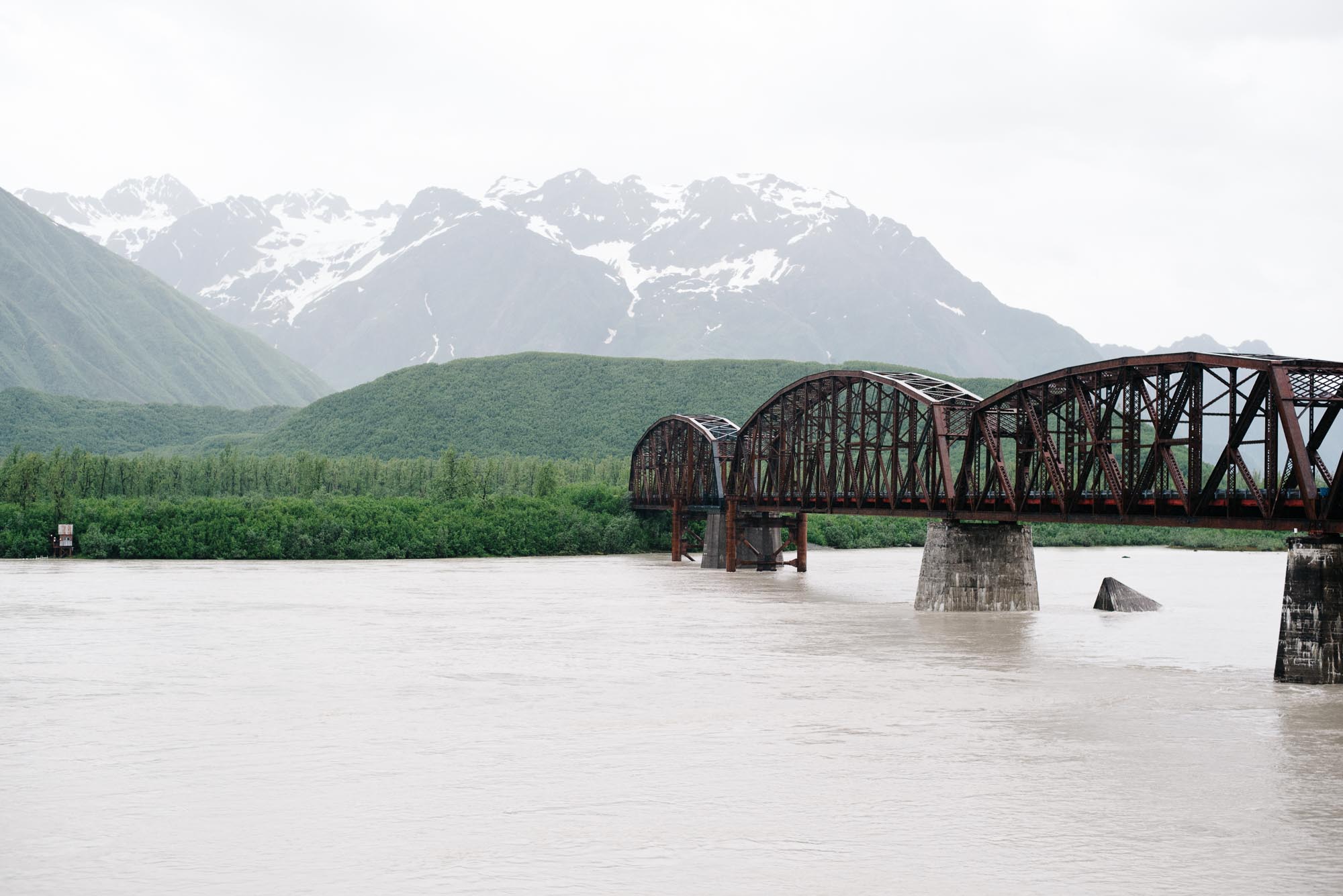
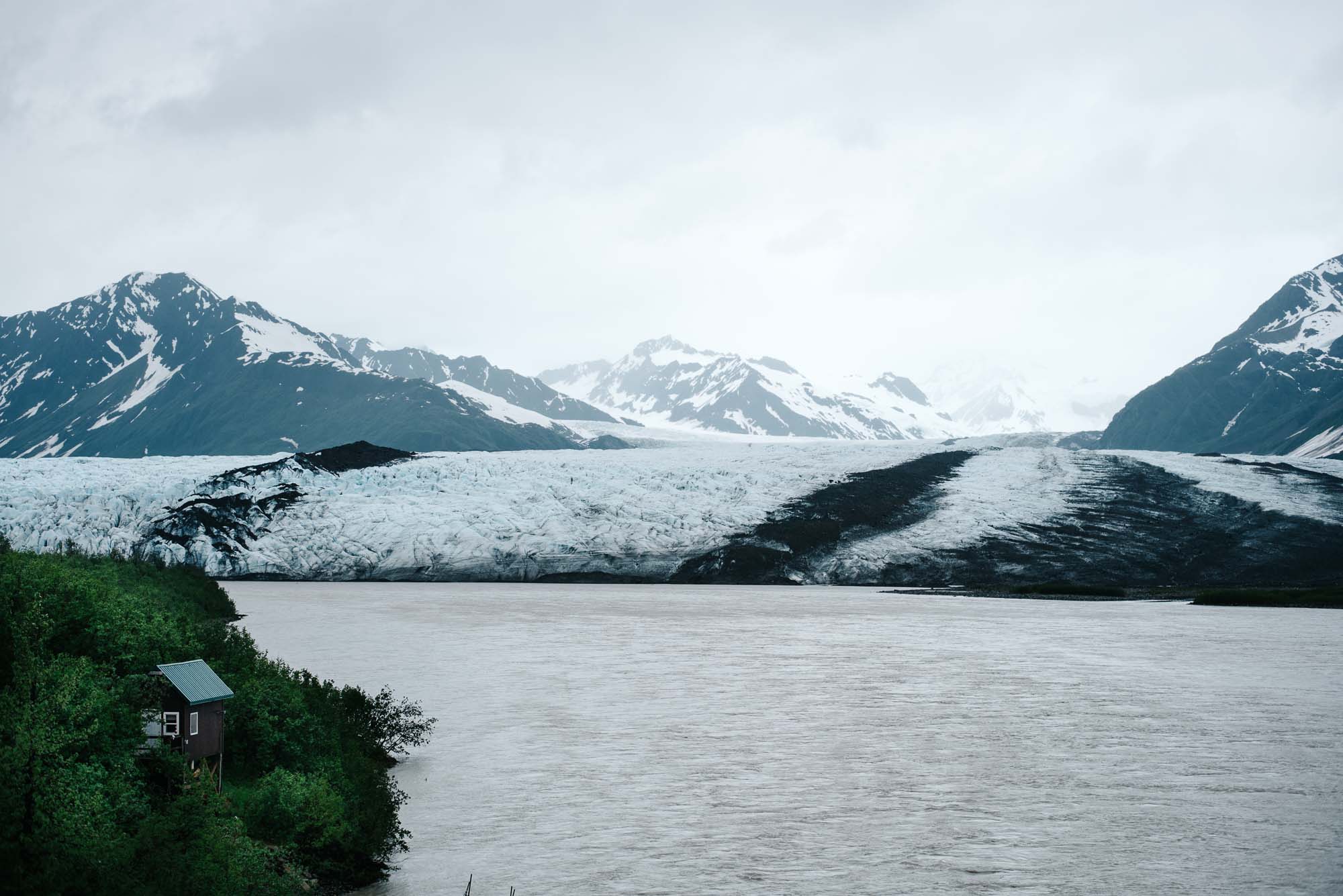
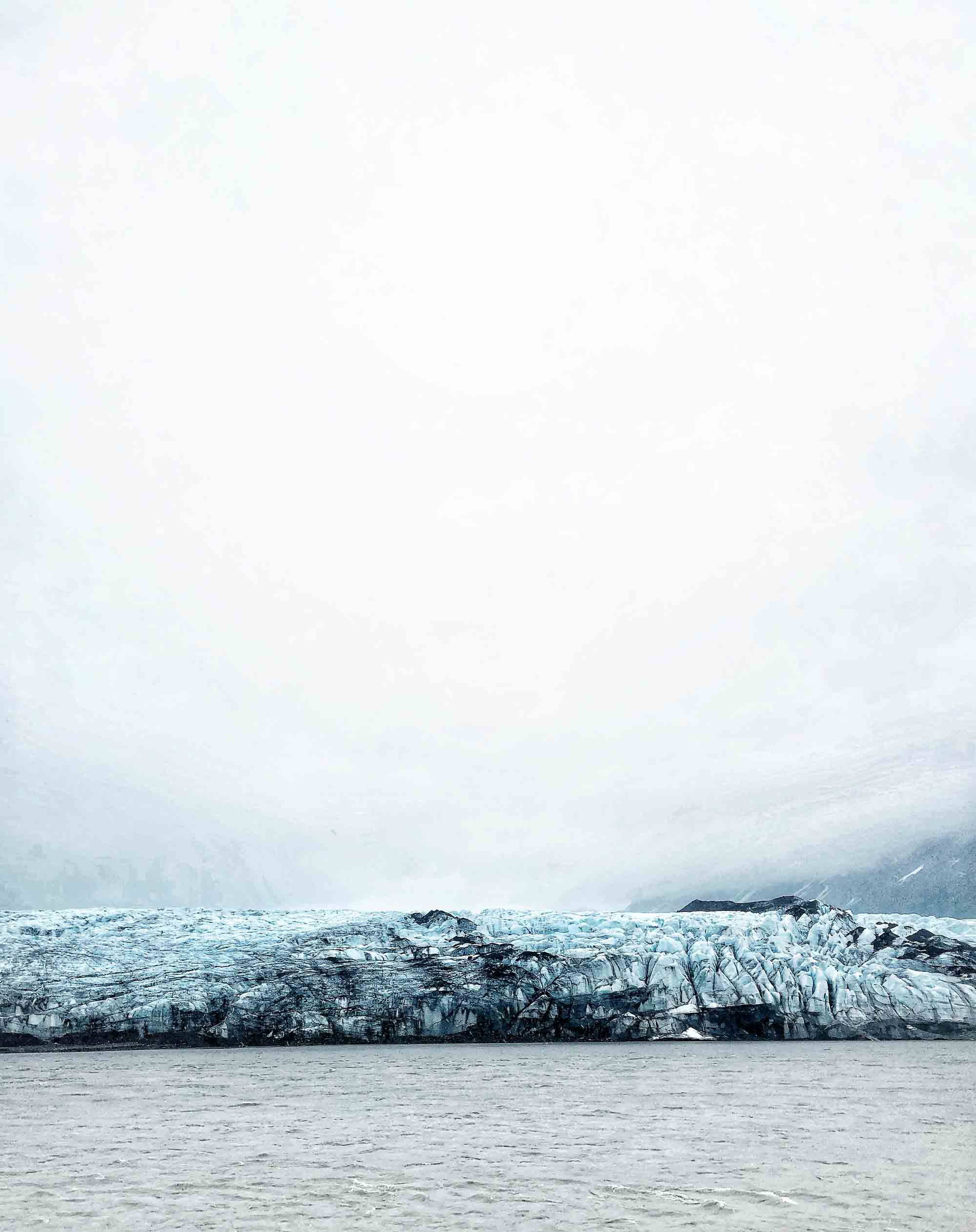
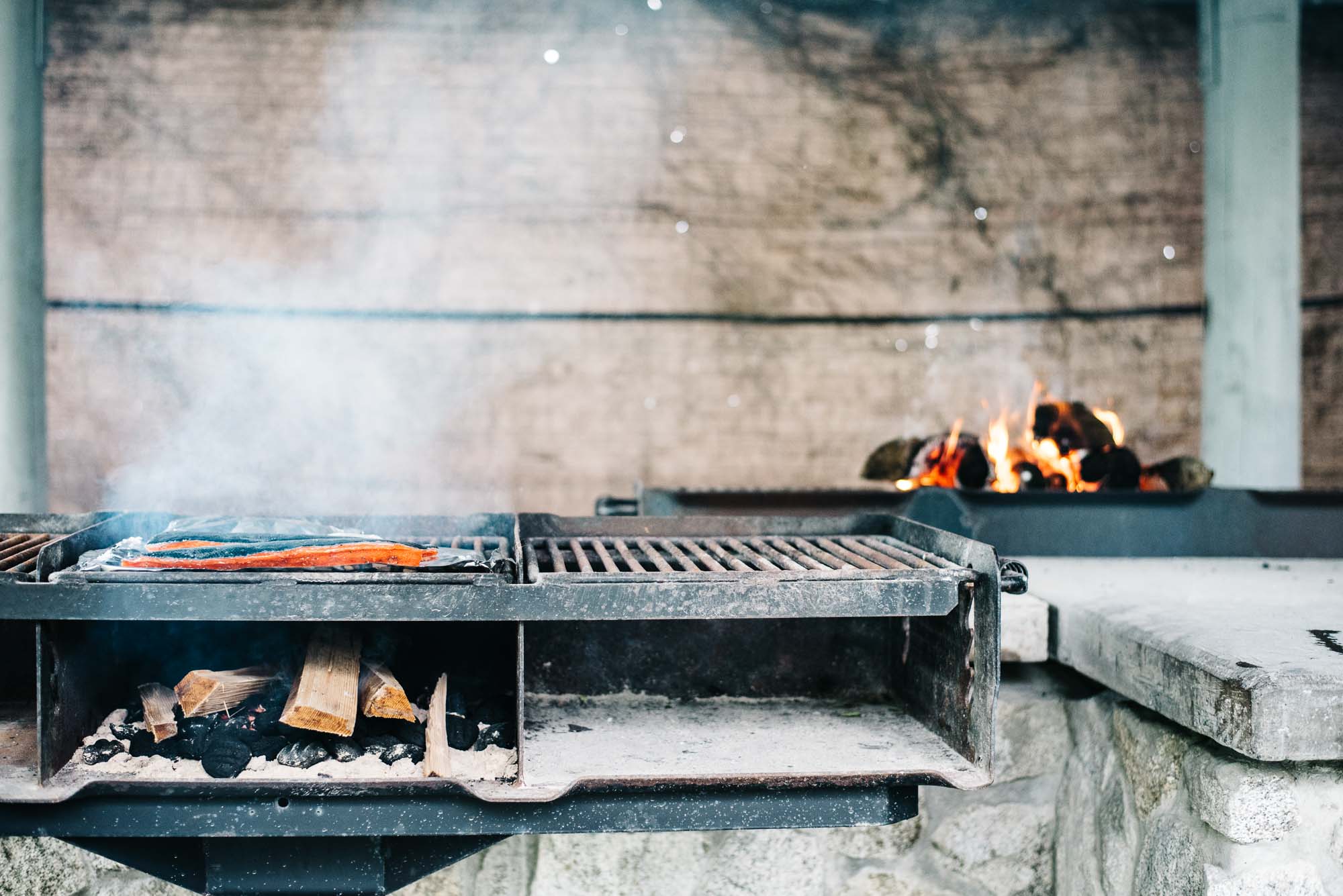
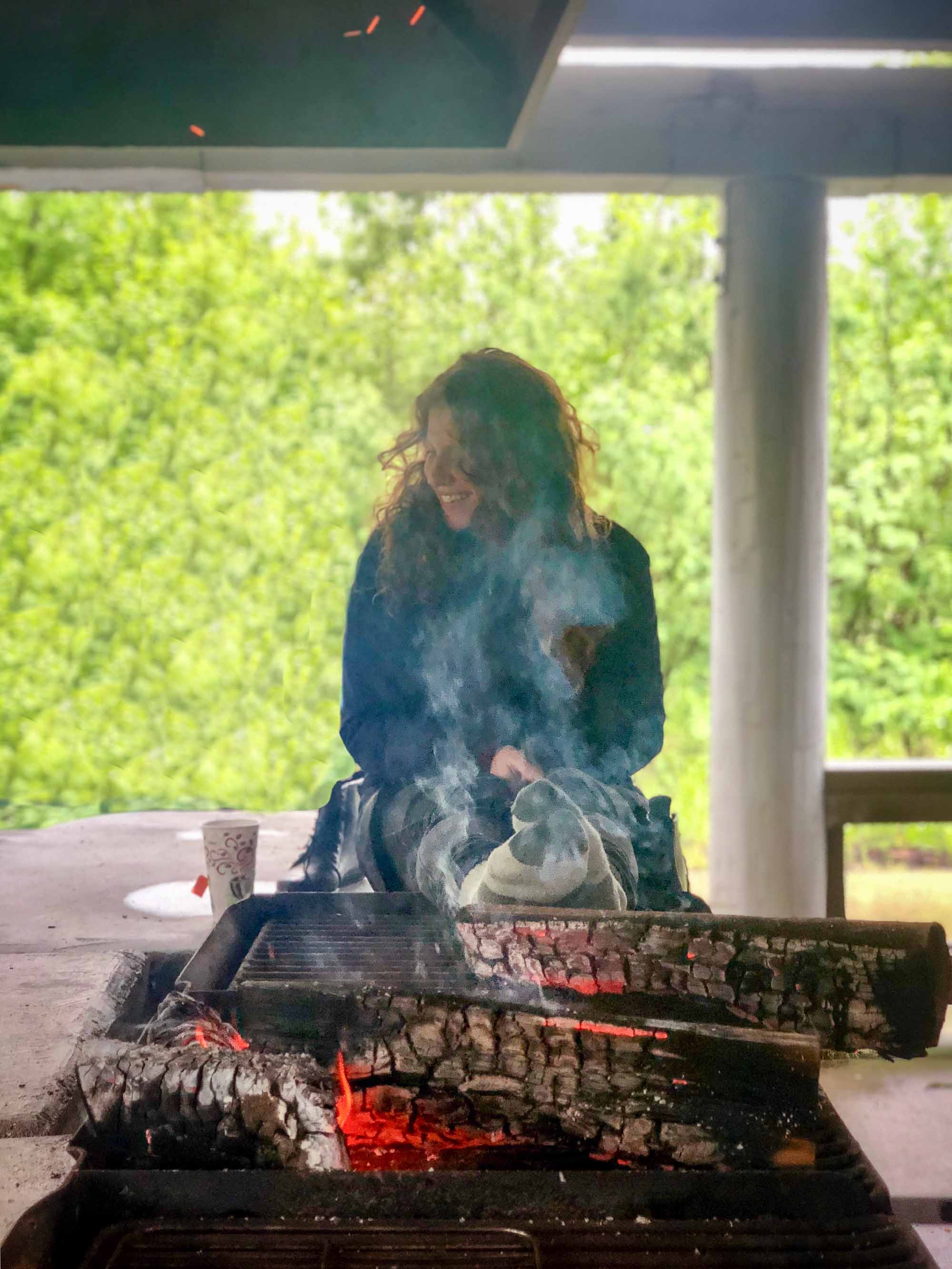 Photo by Jessica Fiorillo
Photo by Jessica Fiorillo

We are in Cordova, Alaska, just a bit southeast of Anchorage. Flying in, I see land that looks painted—flat, serpentine curves of blue and green unlike any I’ve seen before. We are in the Chugash Mountains, where much of the land is river delta, wet and tumultuous. Patterns and striations form and dissolve with the shifting sloughs of the Copper River, changing each year (or day) to represent the land now and now and now. In Alaska, sand is not sand but glacial flour, so fine that the water can move it in an instant.
Kinsey Justa, program coordinator at Copper River Salmon (the marketing organization that supports the fishermen of the Copper River and nearby Prince William Sound) and one of our intrepid leaders for the week, peppers our practical education in salmon with deeper meaning. In the cosmology of Alaska Natives—the indigenous people of this land—the ocean represents the spirit world. Salmon, then, is the keystone of the spirit world and the life cycle of existence. Salmon feeds humans, animals, and land. Ultimately, salmon deliver marine nutrients to forest and vegetation hundreds of miles from the coast by way of the bears who eat the weakened adult fish as they return upstream.
On our first full day in Cordova, bundled in layer upon layer of clothing and rain gear, we cross the Copper River to meet Alaska Department of Fish & Game marine biologist Shane Shepherd at the foot of Childs Glacier. Here, in a small observation hut overlooking two sonar stations, Shepherd and his colleagues record every salmon that swims by on its journey upstream to spawn. Undeterred by seals, rough currents, bears, and one of the longest journeys from ocean to stream, Copper River salmon migrate solely fueled by the nutrients and omega fatty acids stored from their time at sea.
Shepherd shows us the new ultrasound sonar imaging system that allows them to determine how many salmon are swimming upstream at any given hour—a sustainability measure that helps protect salmon populations until the numbers are large enough for fishermen to intrude. This is a truly biodynamic system, in which every part plays a vital role in the viability of the whole. Every salmon that swims upstream directly benefits either a fishermen and their family, an Alaskan in need of food for the year, a hungry bear, or a forest.
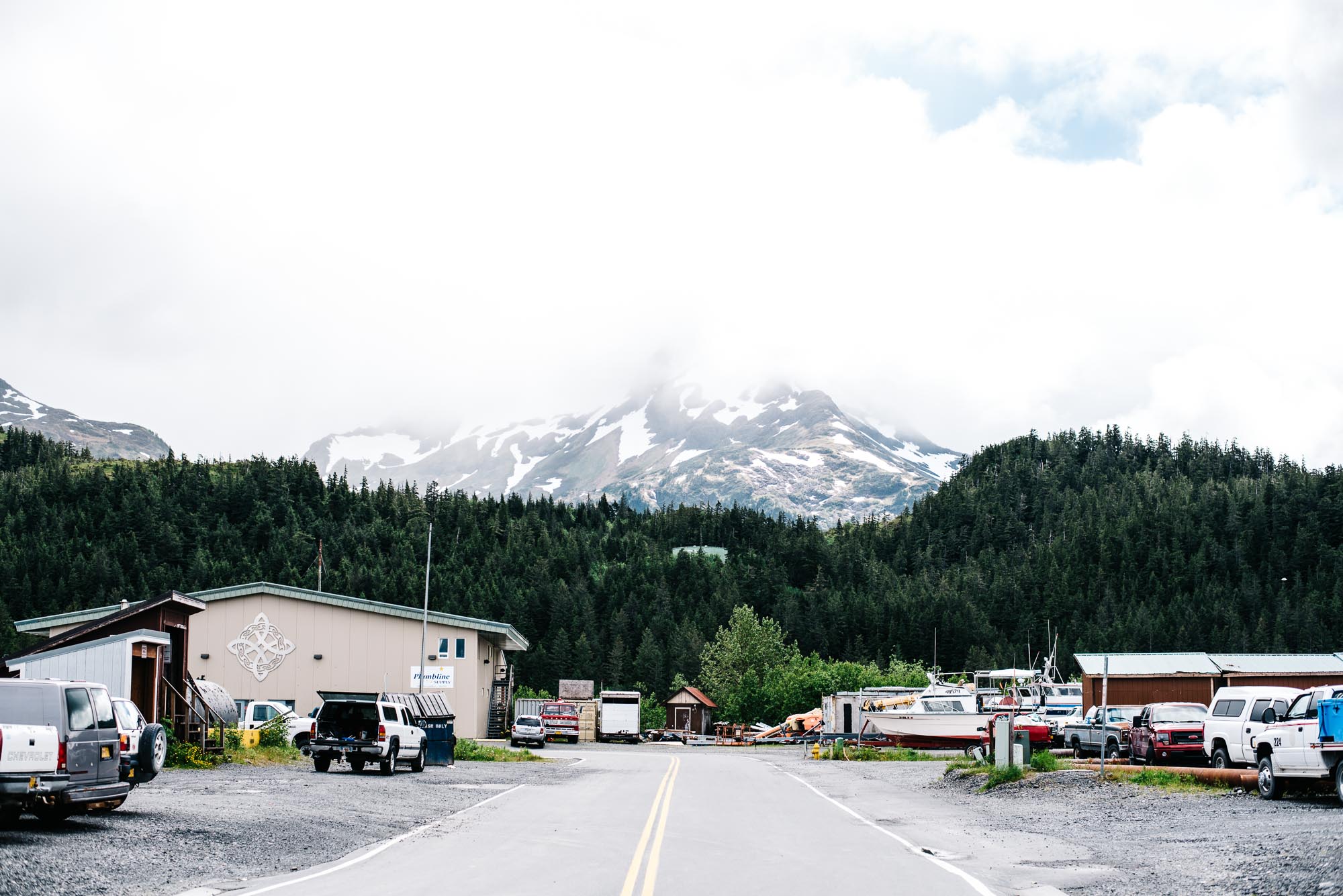
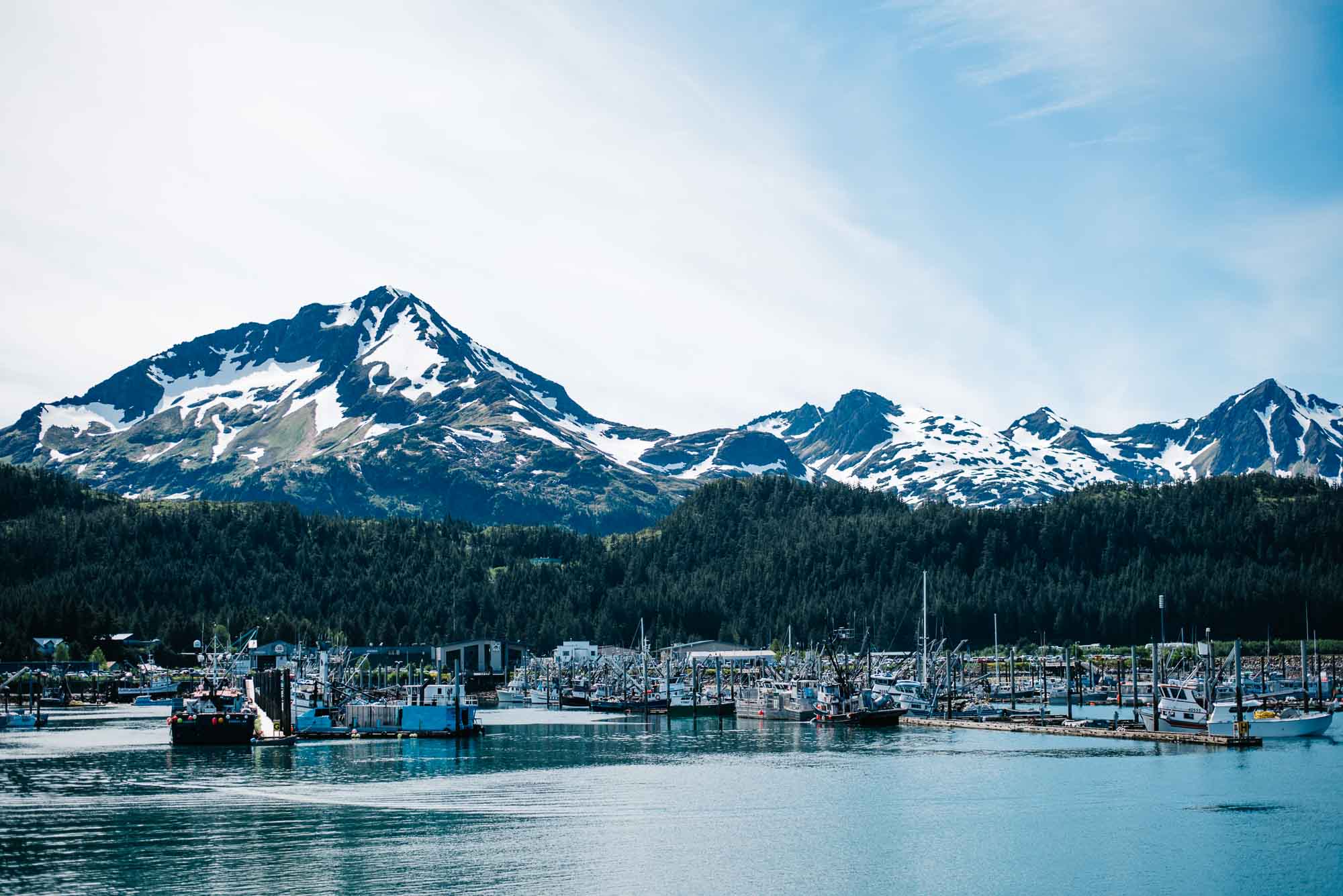
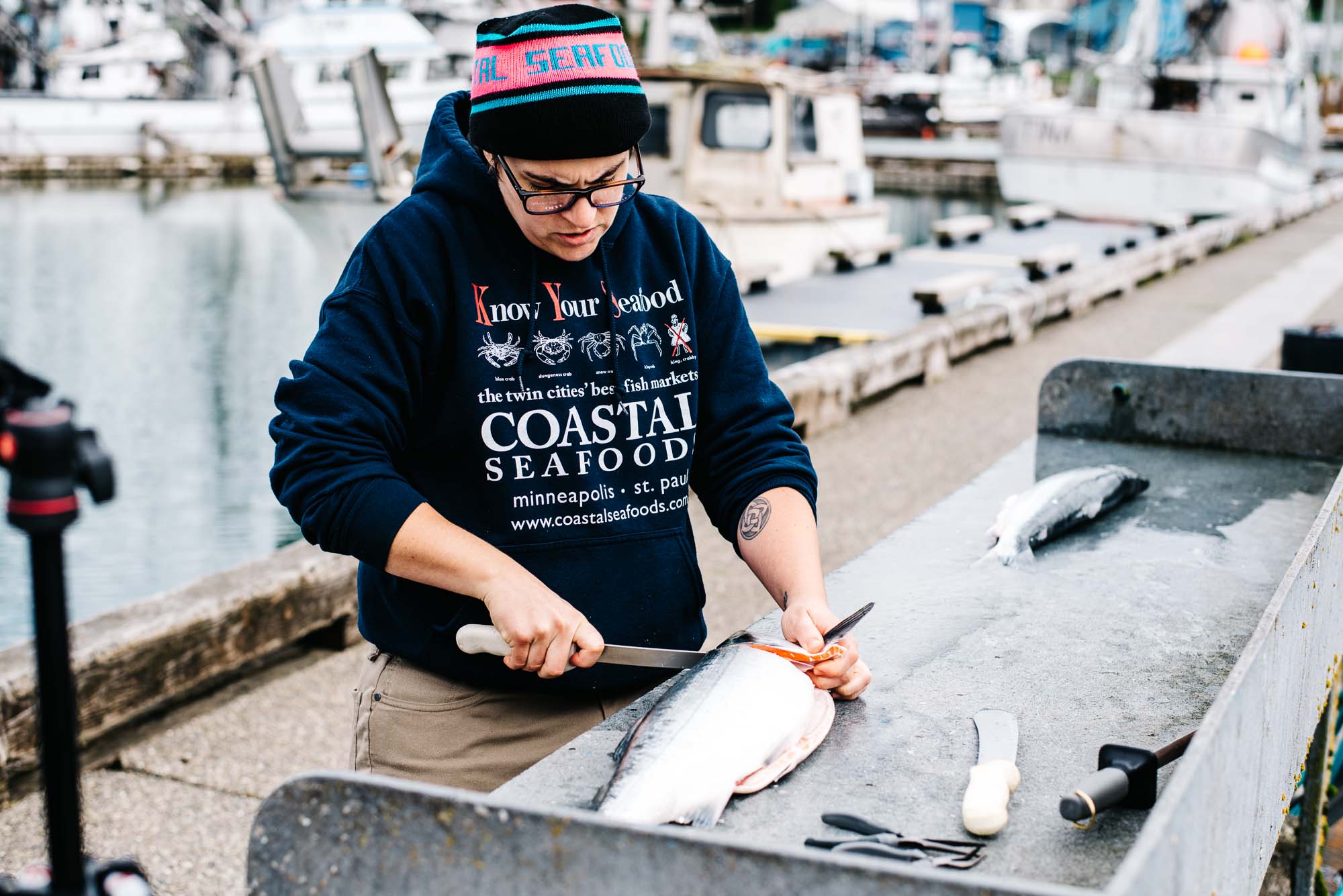
 Photo by Jessica Fiorillo
Photo by Jessica Fiorillo
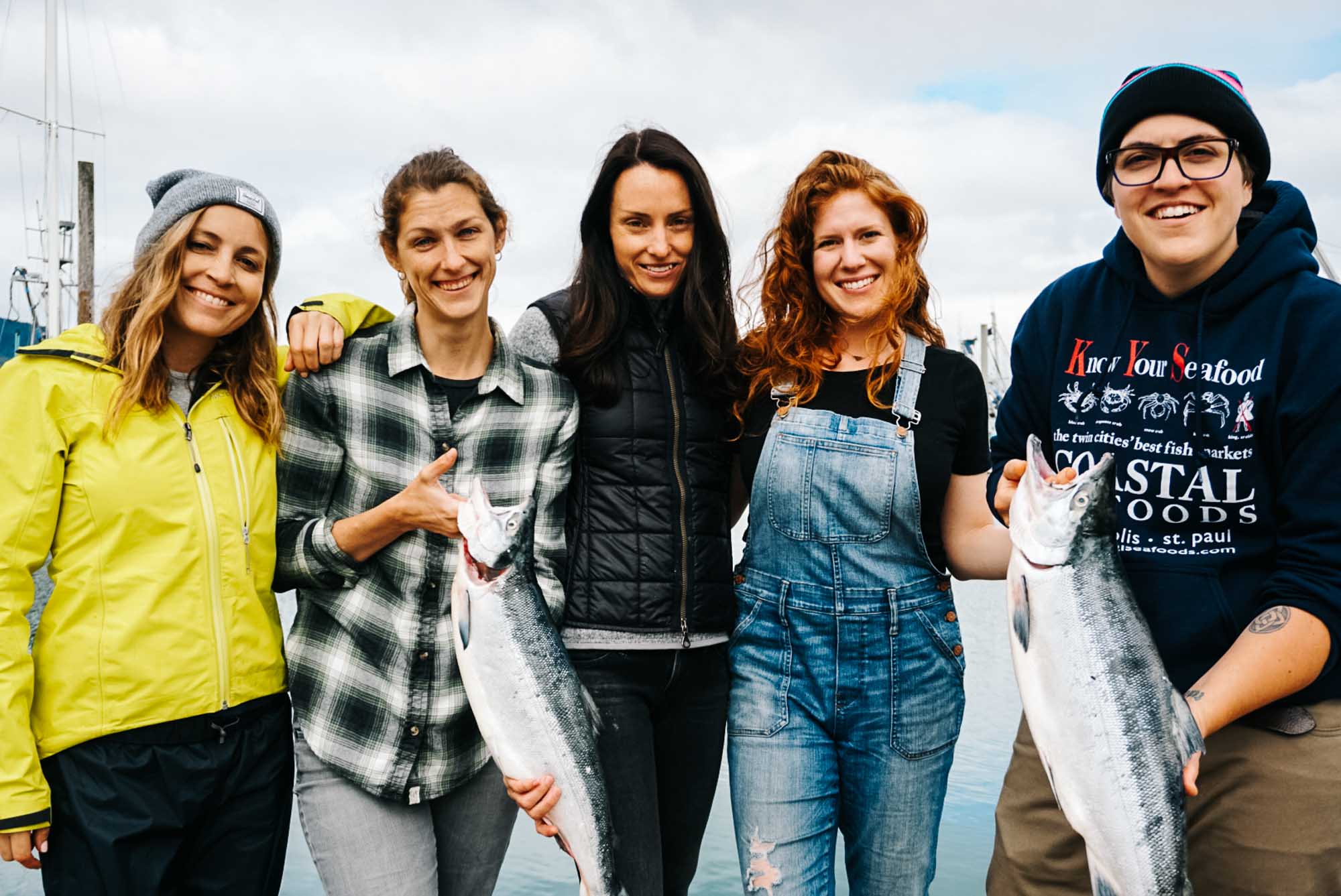 Photo by Copper River Salmon
Photo by Copper River Salmon
The days in Alaska start to blur, in part because the sun doesn’t set until nearly one a.m. each morning. It is nearly summer solstice, the longest and brightest day of the year, which also means it’s nearly the ten year anniversary of my mother’s death. I can think of no greater way to honor her than by digging into this time in Alaska, paying homage to her sense of connection to the land and all of its creatures as sacred.
Each morning, we wake slowly in our yellow house on the hill above the harbor. There are five of us, all women, only two of whom I knew prior to arrival. I am sharing a room with someone I just met—a fate I previously would have dreaded—who quickly becomes a cherished friend. Annie Byrne is a fishmonger from Minnesota who also happens to be one of the kindest and most positive people I’ve ever met. She tells us to call her Granny Annie, and we do not hesitate to do exactly that. Down at the harbor, Granny Annie teaches us to fillet, gives us confidence that we, too, can do this at home.
In the yellow house on the hill, we make salmon dinners together and drink tea before bed. Other nights, we adventure out to The Reluctant Fisherman and beyond, to the wilds of the road that used to lead out of town, before the bridge washed out. Christa Hoover, Executive Director of Copper River Salmon, takes us to her favorite spot in the sloughs, an inlet where the river is wide and meandering, where we can roast salmon and peaches over the fire. Hoover is grace and purpose, clarity and kindness. Together, she and Justa steer the ship of their organization with an astounding ease, driven by the strength of their commitment to support the fishermen, the salmon, and these lands and waters.
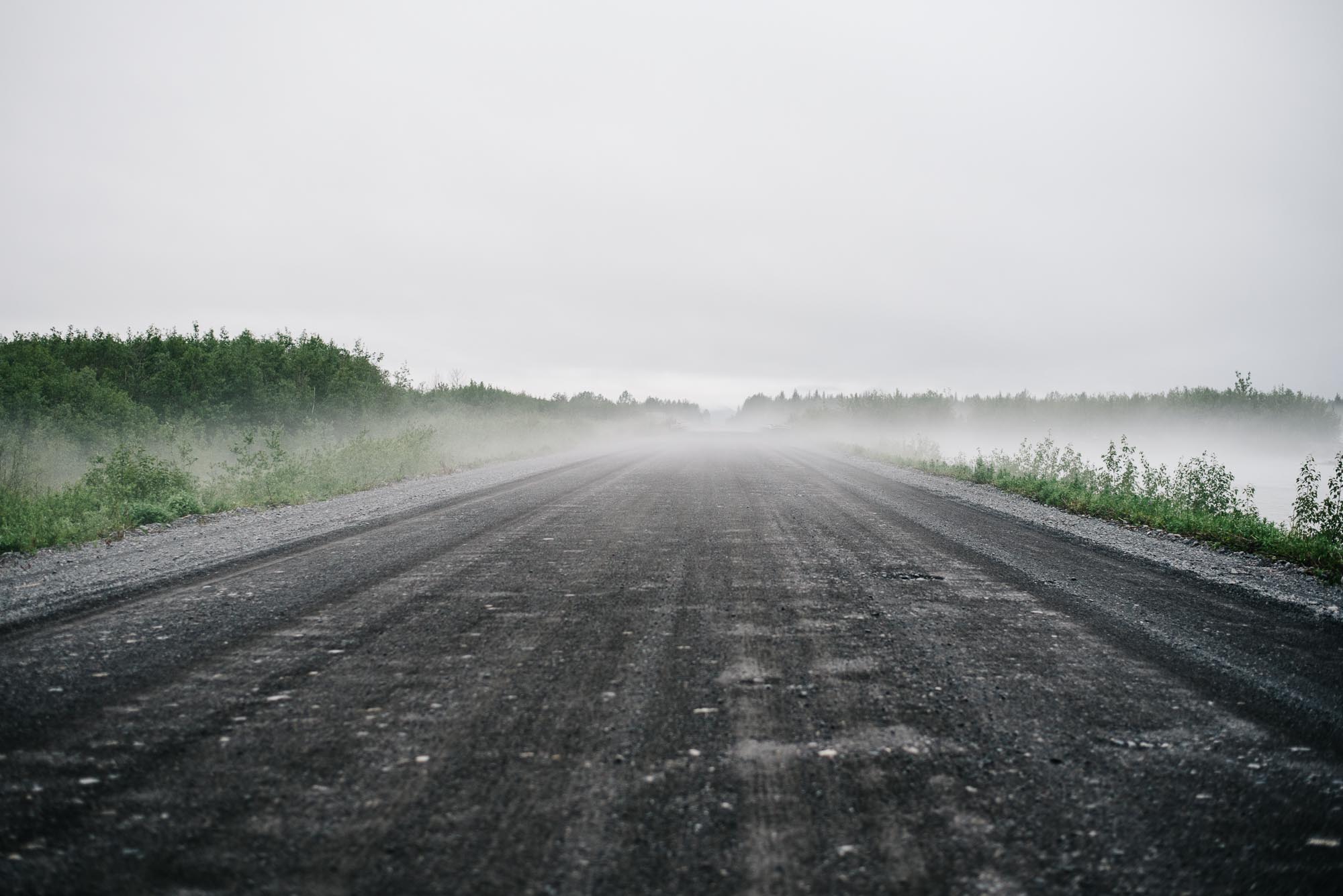
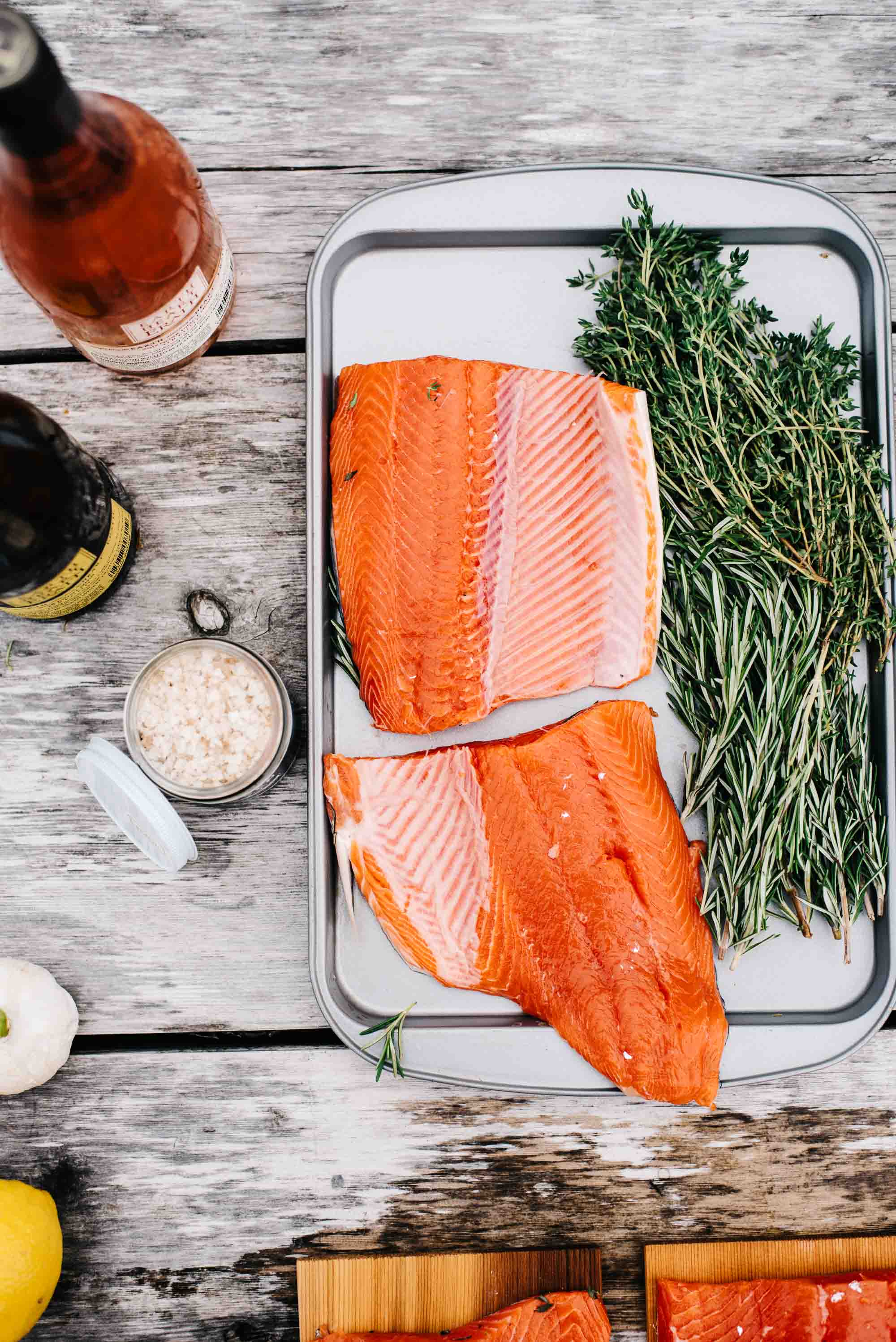

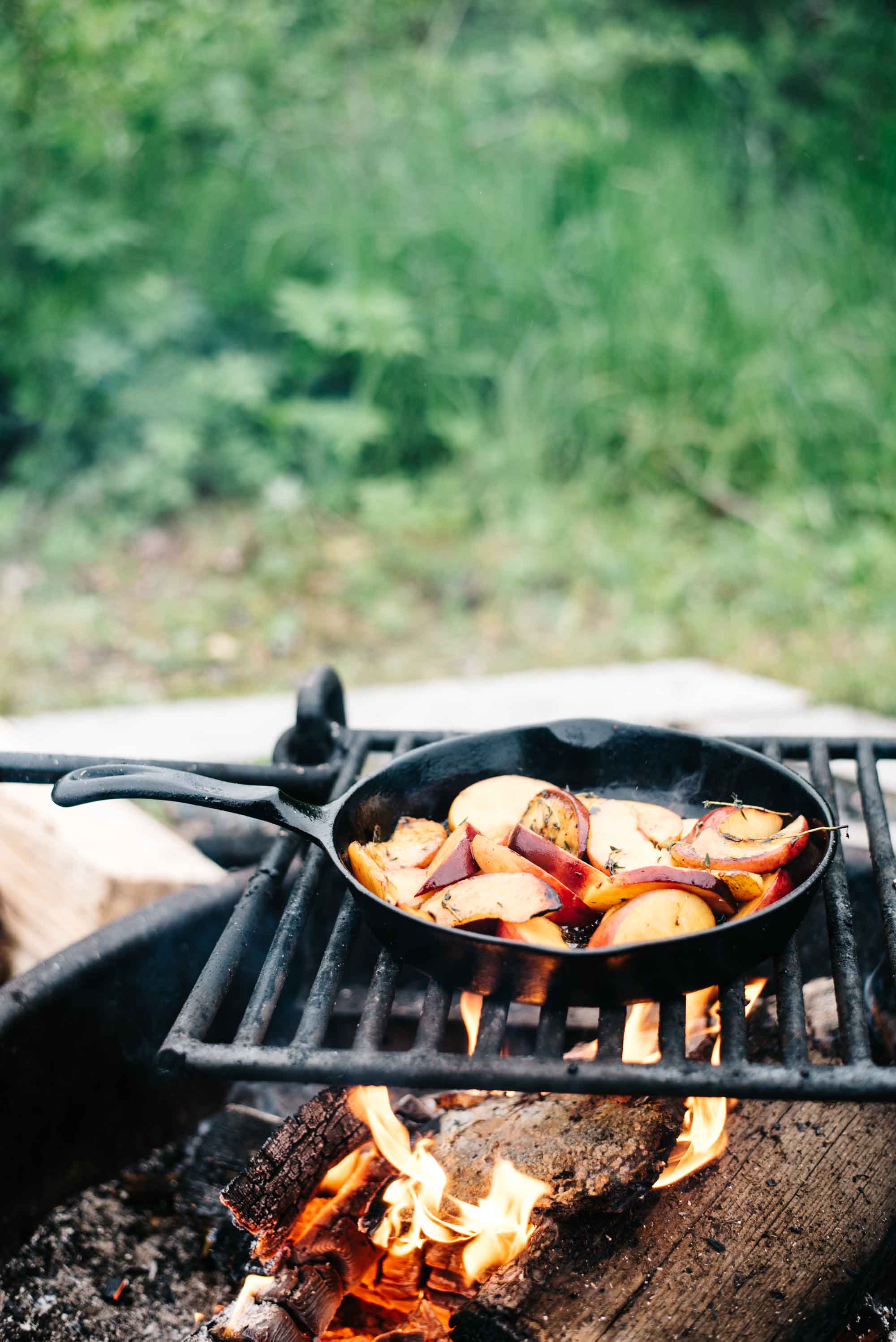
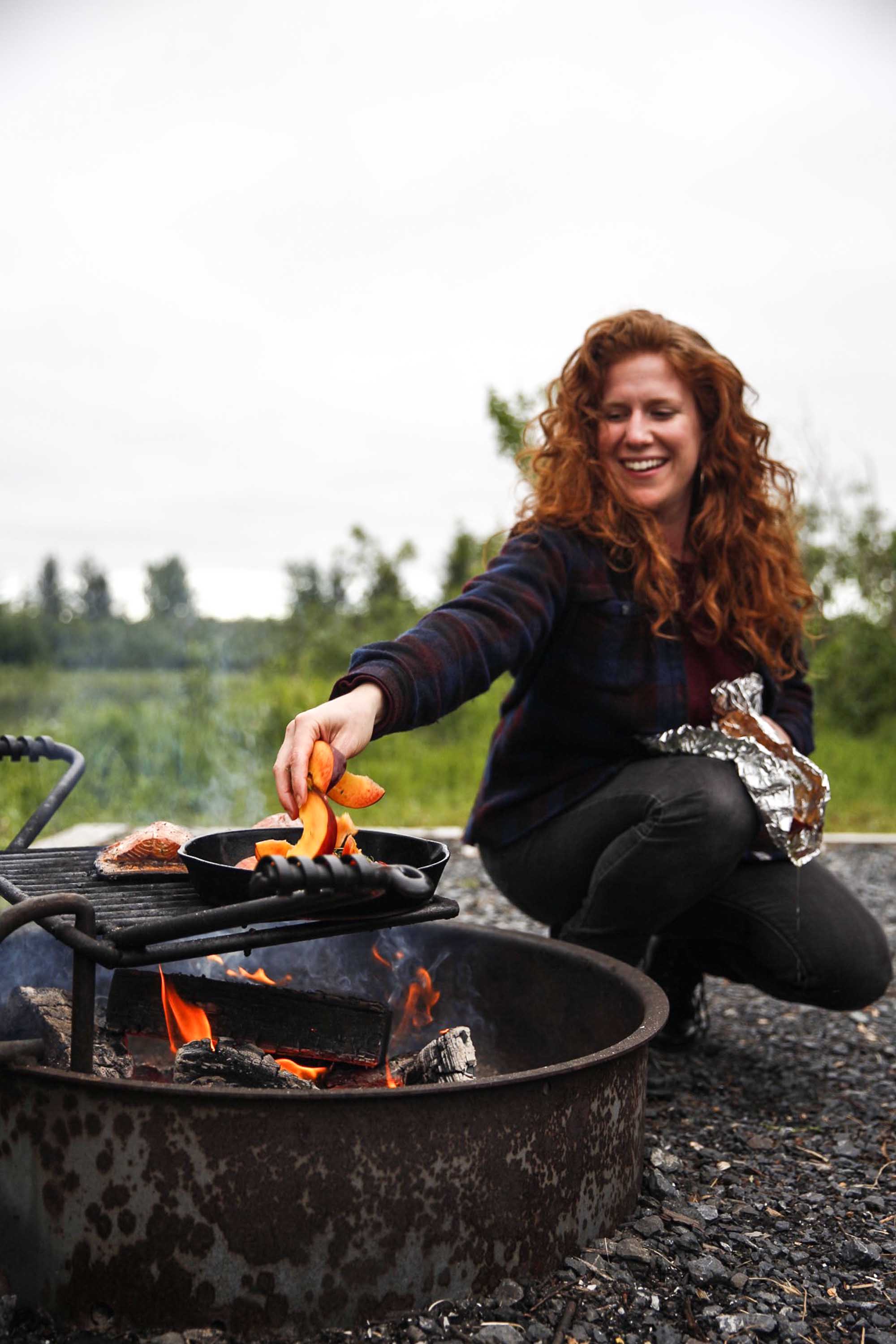
Photo by Jessica Fiorillo
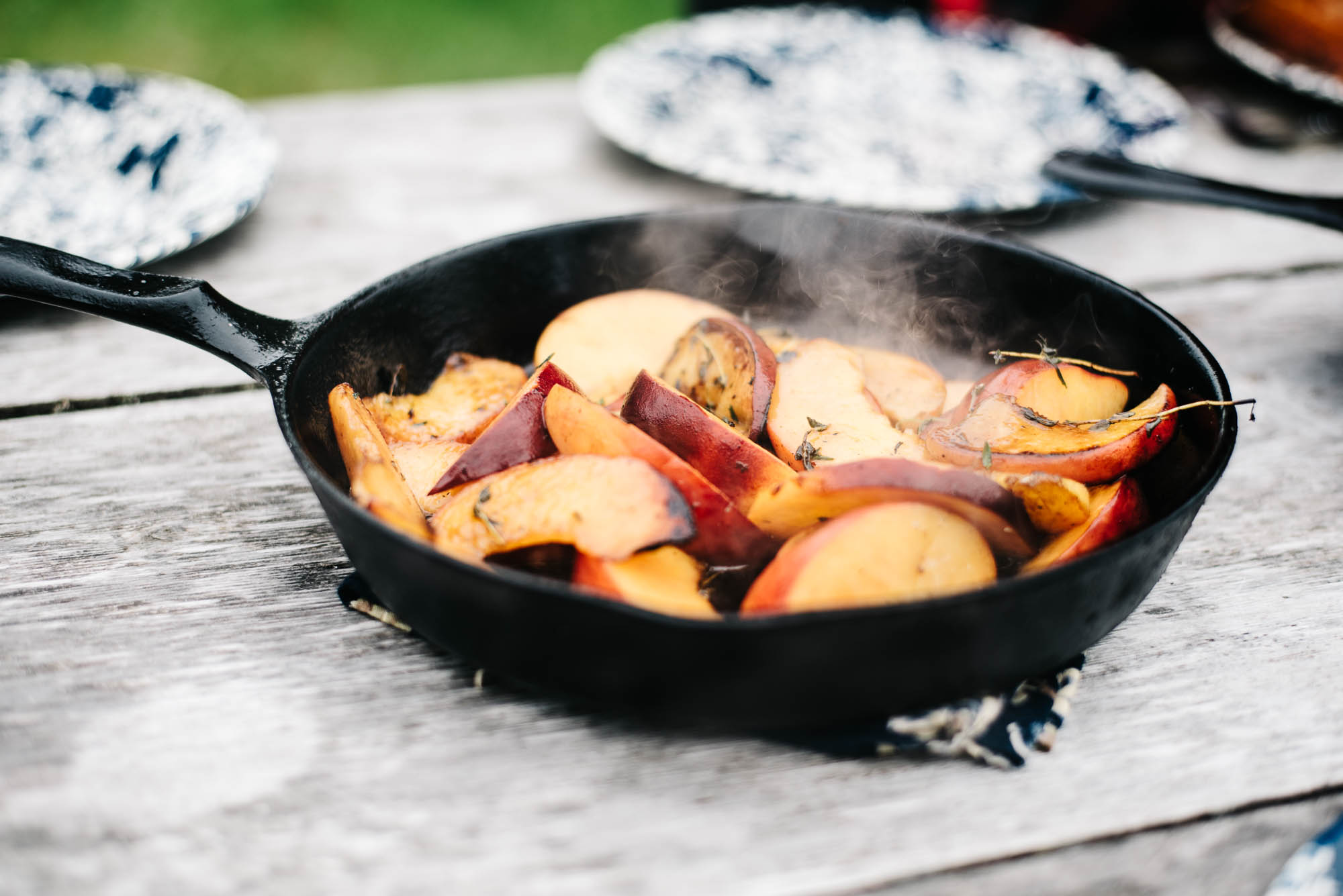
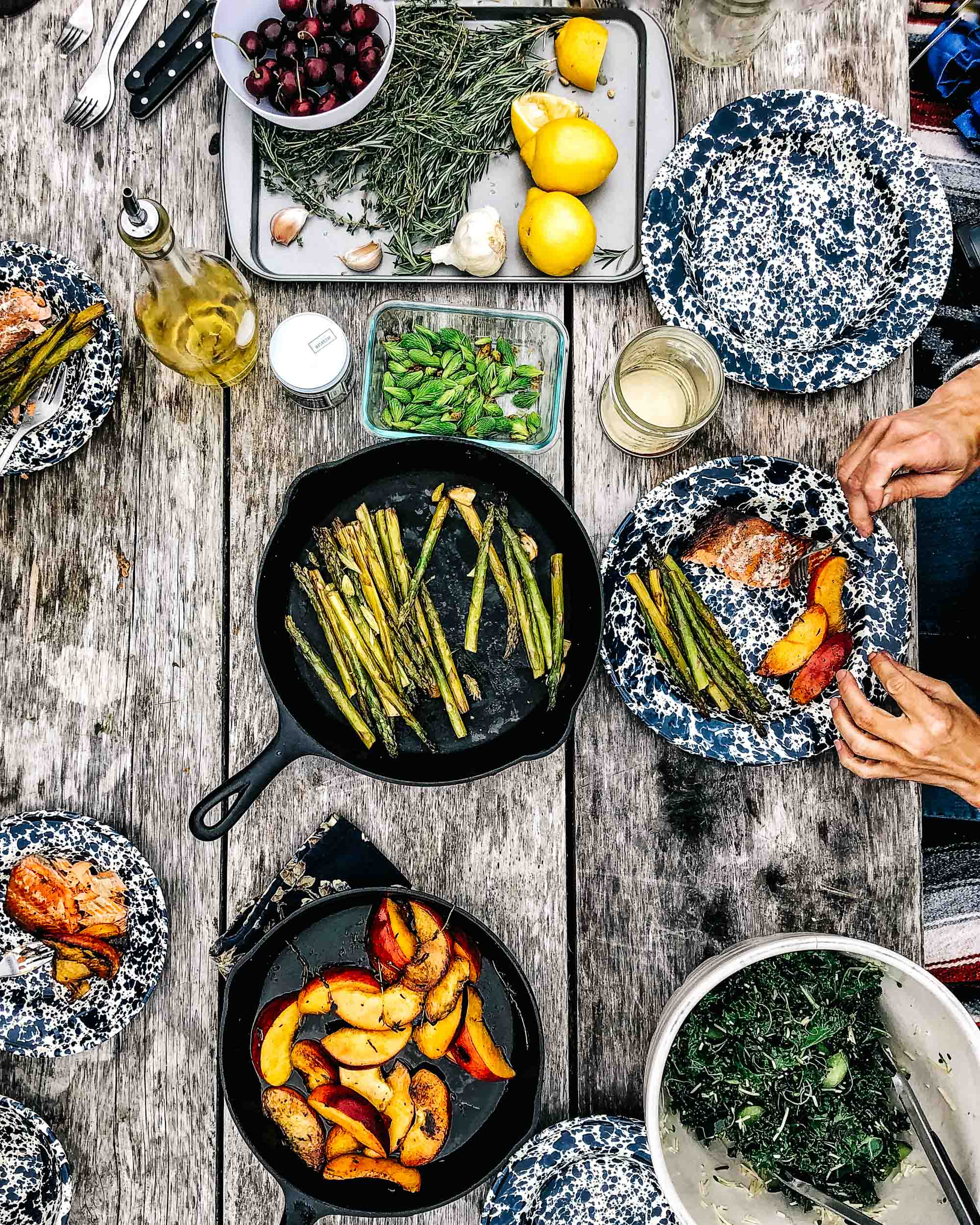
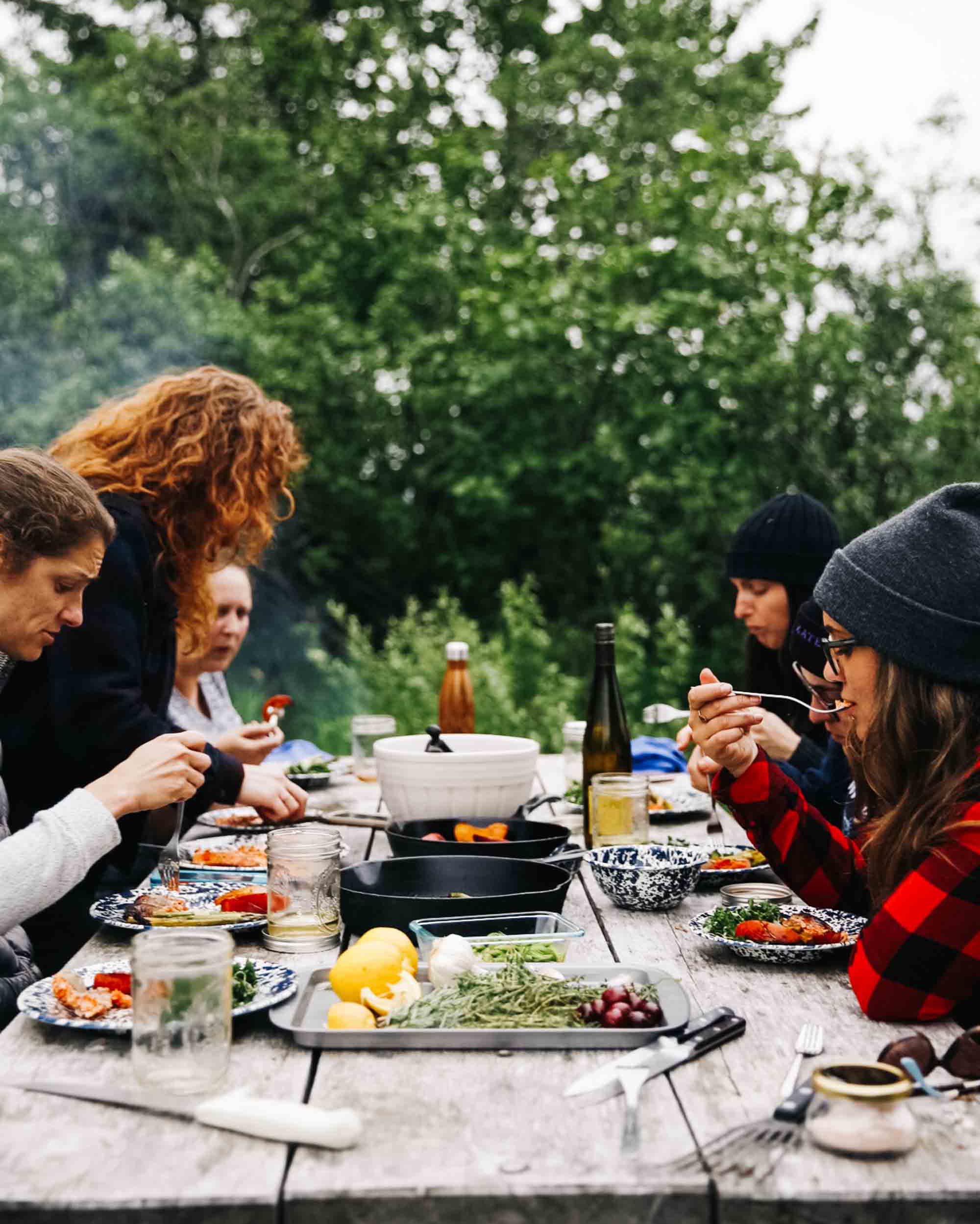 Photo on right by Jessica Fiorillo
Photo on right by Jessica Fiorillo
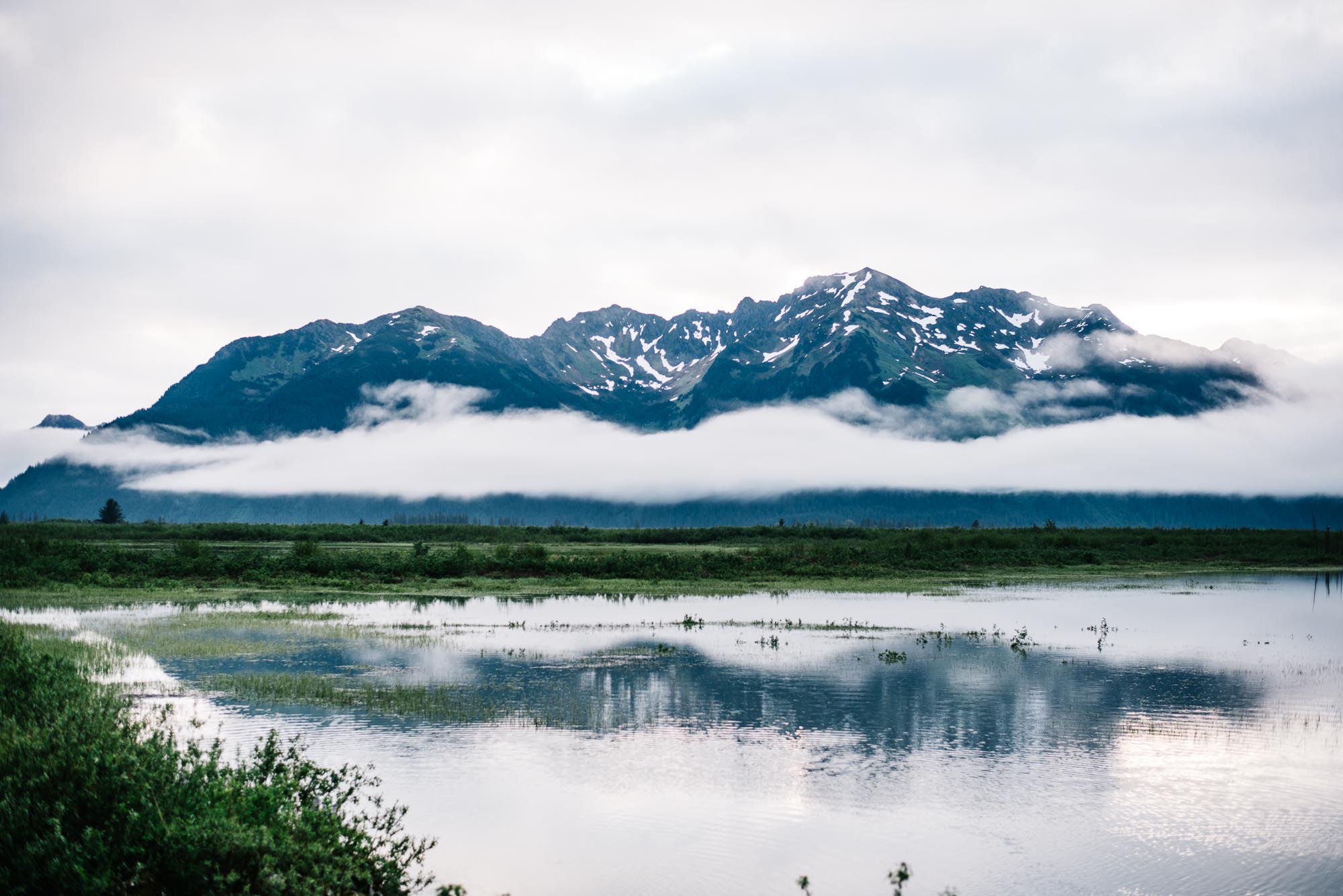
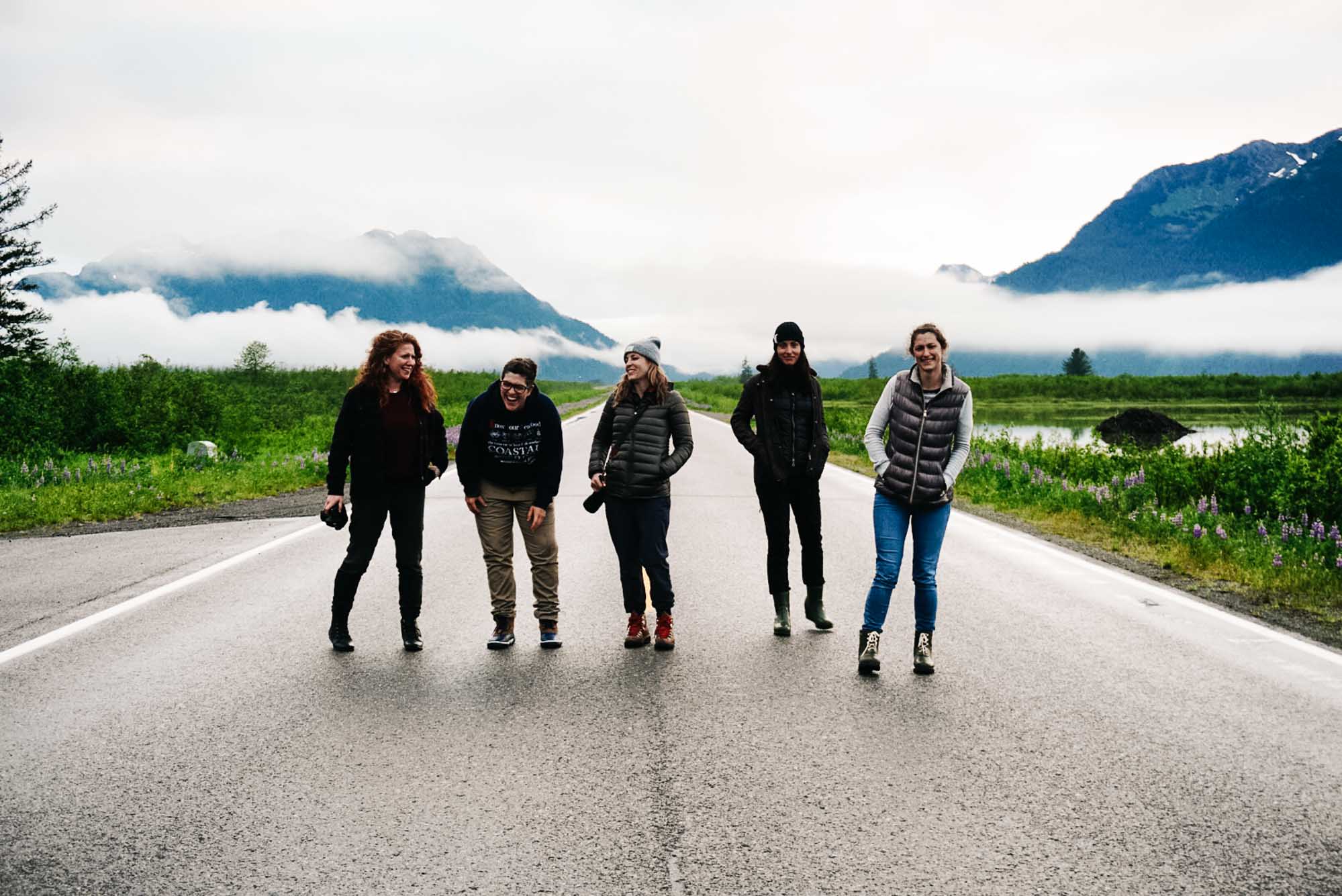 Photo by Copper River Salmon
Photo by Copper River Salmon
And then, of course, there is the matter of the salmon itself, its dense coral hue, its silky texture, its pure, clean flavor. Each Copper River and Prince William Sound salmon is bled and iced at the point of harvest so that it maintains optimal freshness. It works. This salmon is extraordinary. It becomes a part of the rhythm of my time in Alaska, and I start to forget what it’s like not to have salmon every day. I imagine another, stronger, wilder, Alaskan version of myself, married to a fisherman, fueled by salmon, the king of the spirit world, the unifier. It could happen.
On our last day, we hike up to the top of Mt. Eyak. We forage young spruce tips. We listen to the roar of waterfalls echoing across the river delta. As we enter into a blueberry patch, Justa calls out ahead to clear our path from bears. At the summit of the ski hill, we look out over Hawkins and Hitchinbrook Islands and Prince William Sound. The mountains are dappled with snow and heavy with vegetation that contains trace elements of salmon, of sea. We, too, are filled with salmon and sea, with land.
We climb back down, eager for a final supper of salmon and a summer solstice ritual. Somehow, in five days, we’ve formed a coven of earth- and sea-worshiping women. I prepare glacial clay face masks for us. Jessica Fiorillo makes exquisite cocktails of spruce and wild rose. Jodi Moreno whips up cassava flour sopes for salmon tacos. Everything is succulent.
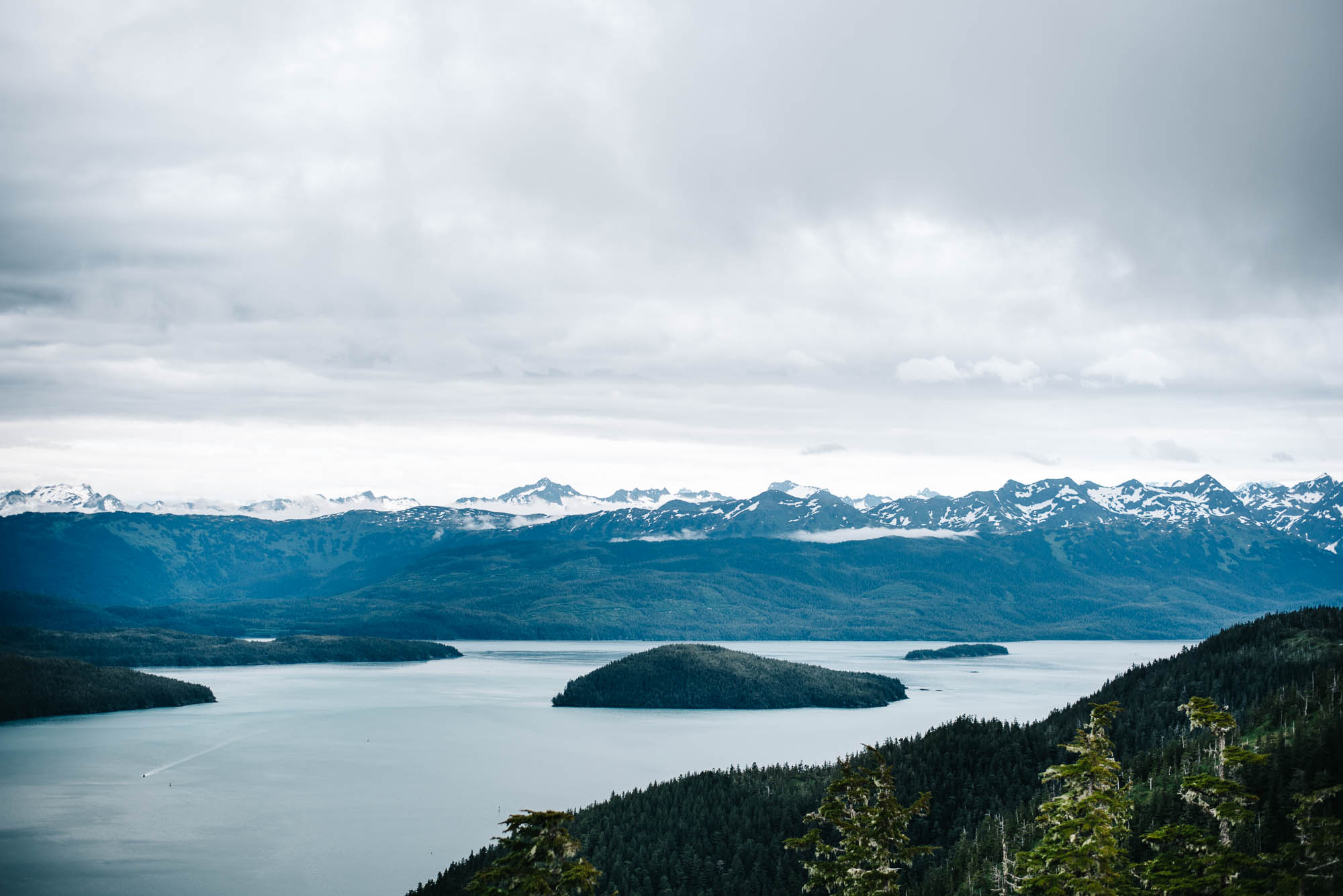
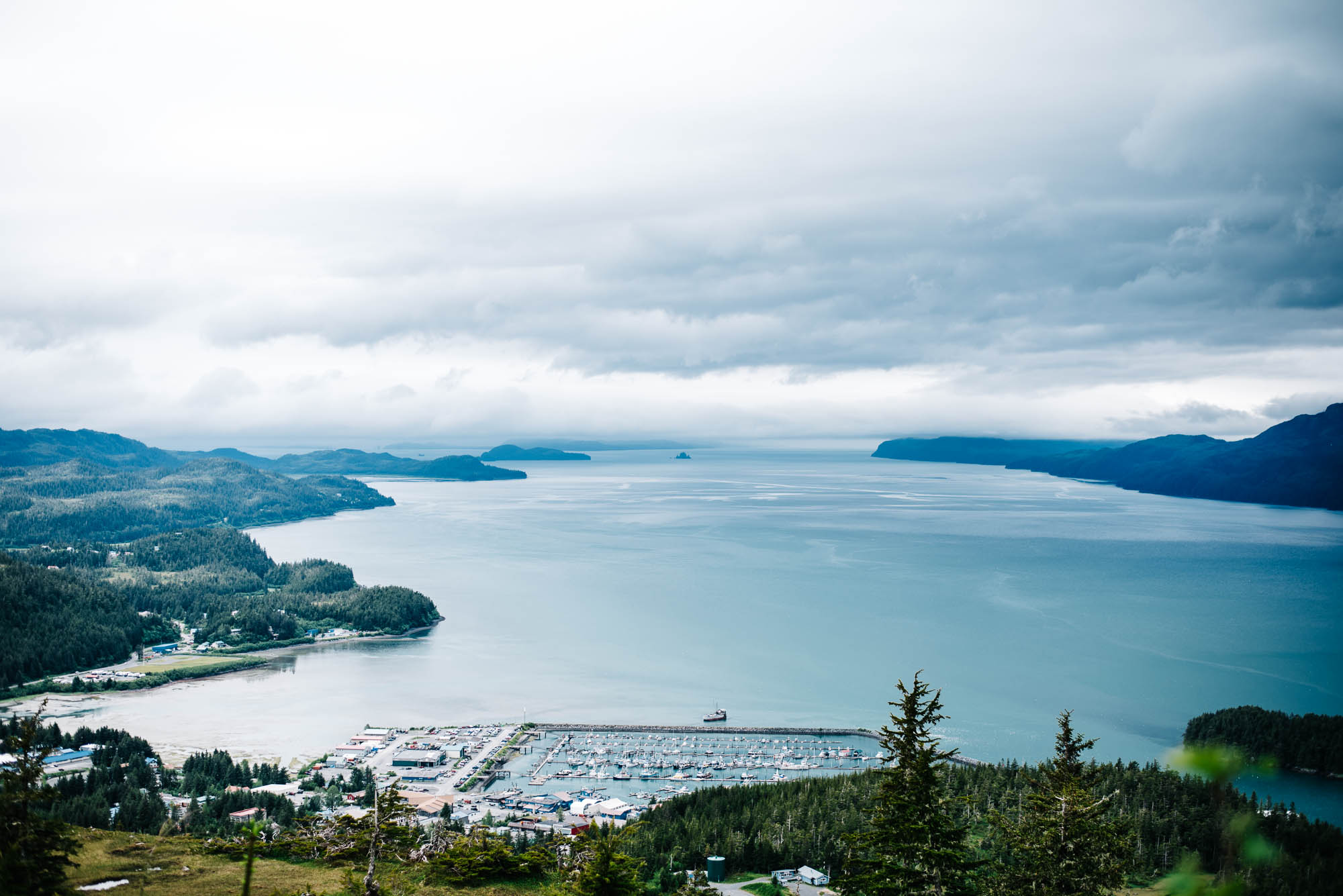
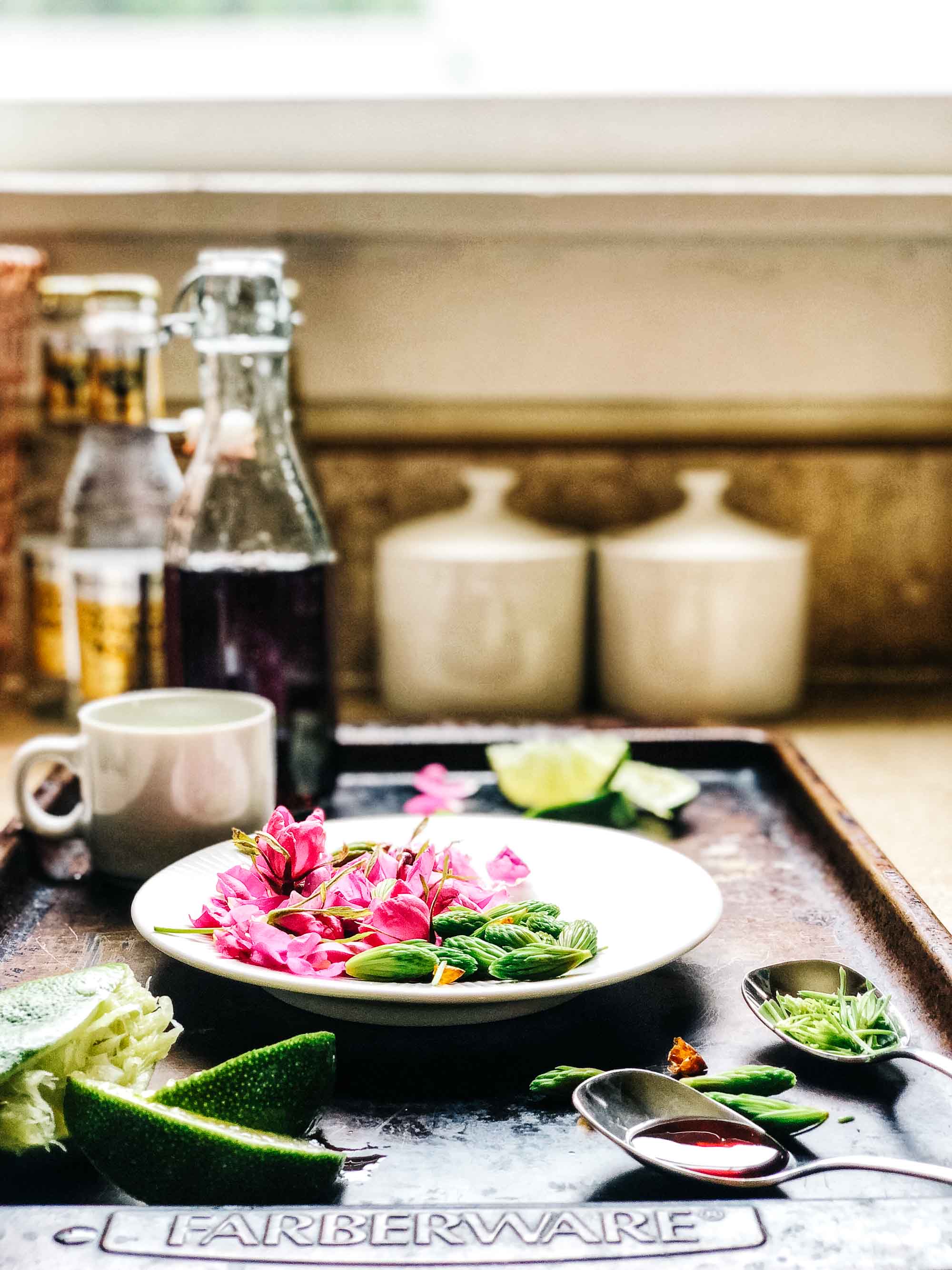
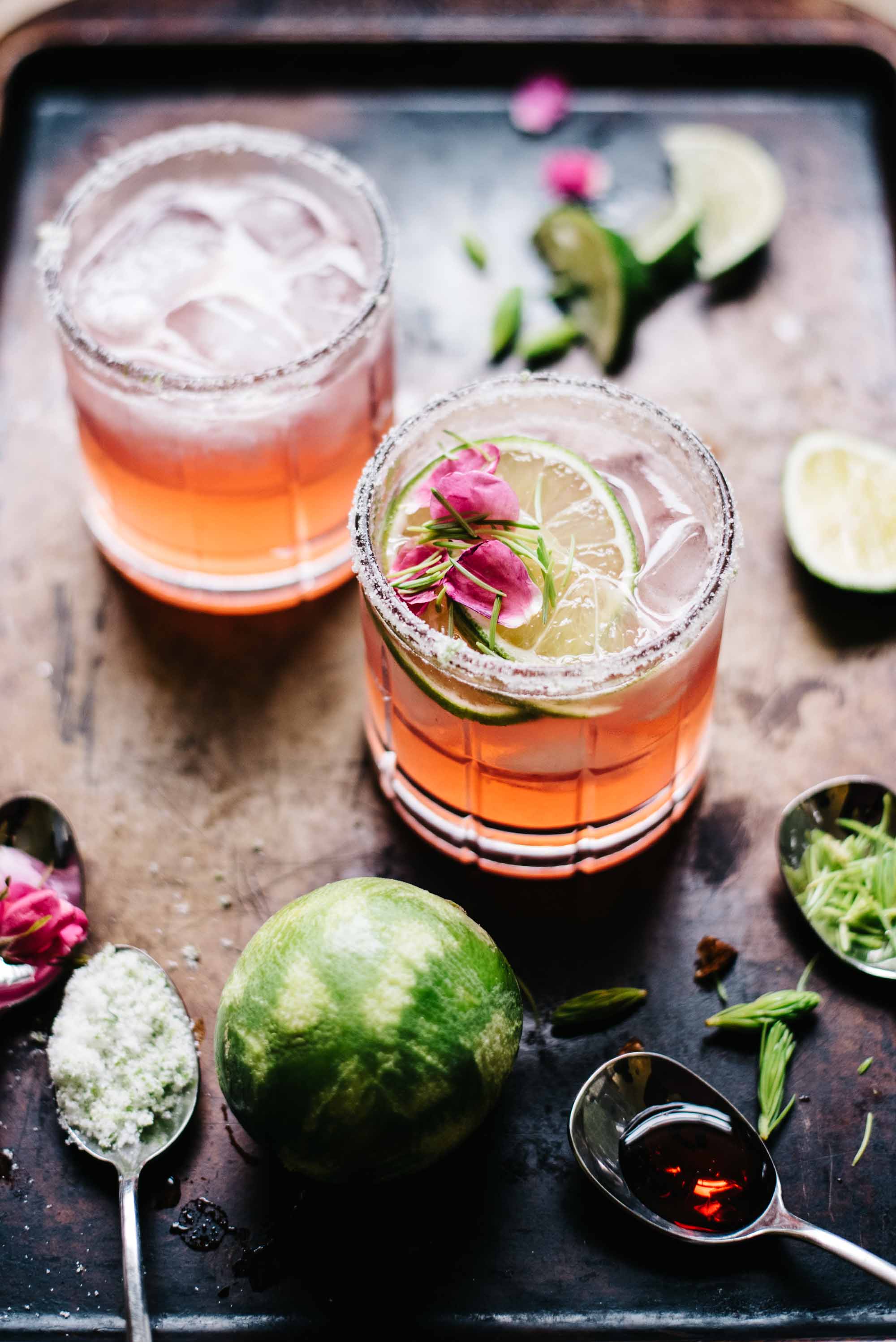
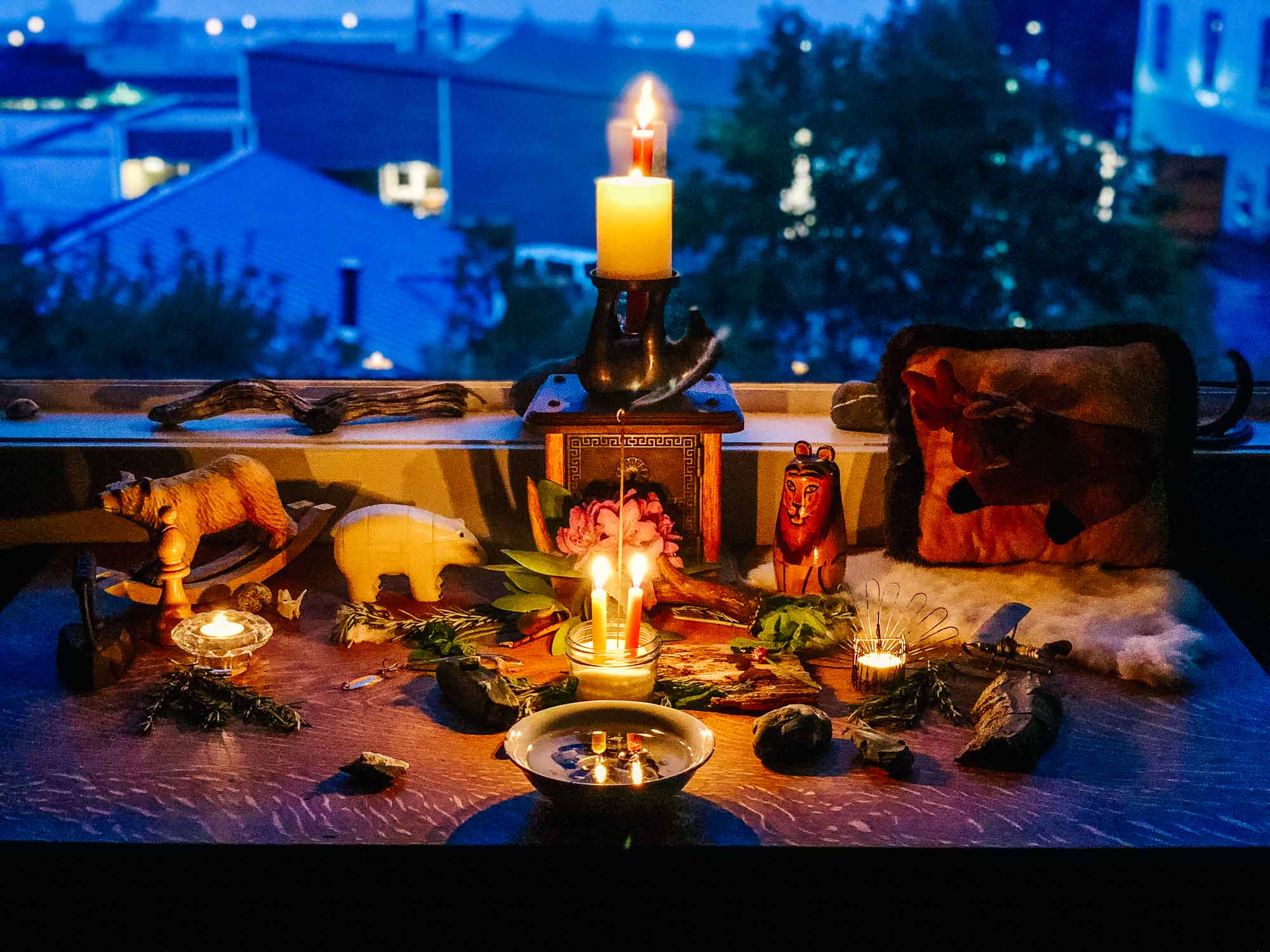
At midnight, our skin cleansed by glacial mud, our bodies enlivened by plants and animals harvested from the land, we stand in front of a solstice altar astonishing in its totemic scope. It looks as though we’ve been planning it all week, despite its coming together in mere moments. I remember my mother, good witch and queen of ritual that she was. Standing before this solstice altar, it strikes me that I, too, am like a salmon. How I swam upstream against the current of grief, how I cast aside one emotional body for the next, how my old, tired body nourished my new one. How I became free by surrendering the old. How nothing ever really disappears but simply changes states, matter becoming energy.
It is my last night in Alaska and I understand now. I am the salmon.
Leaving the next day feels strange; I know already that I will return. Alaska, like my home state Hawai’i, is already a part of my cellular make up. I am ready to learn more from this land, from these people, from the fishermen (and women) of Copper River Salmon.
* * *
Ready to get cooking with Copper River Salmon? Make this roasted lemon crispy-skinned salmon with salsa verde. Find Copper River and Prince William Sound Salmon at grocers and seafood retailers across the country.


